The death of MPVs such as the Toyota Tarago has been widely felt in recent times. Thanks to large seven- or eight-seat SUVs, family car buyers have shunned MPVs so much that they simply barely exist any longer. Those wanting seven seats have wholeheartedly fallen in love with cars such as the Hyundai Santa Fe and Mazda CX-9 thanks to a lot of practicality, good value for money and good reliability. Fast forward to 2021 and both offerings are higher quality, better to drive and more technologically advanced, so which is best? The 2021 Hyundai Santa Fe Highlander or the 2021 Mazda CX-9 Azami?
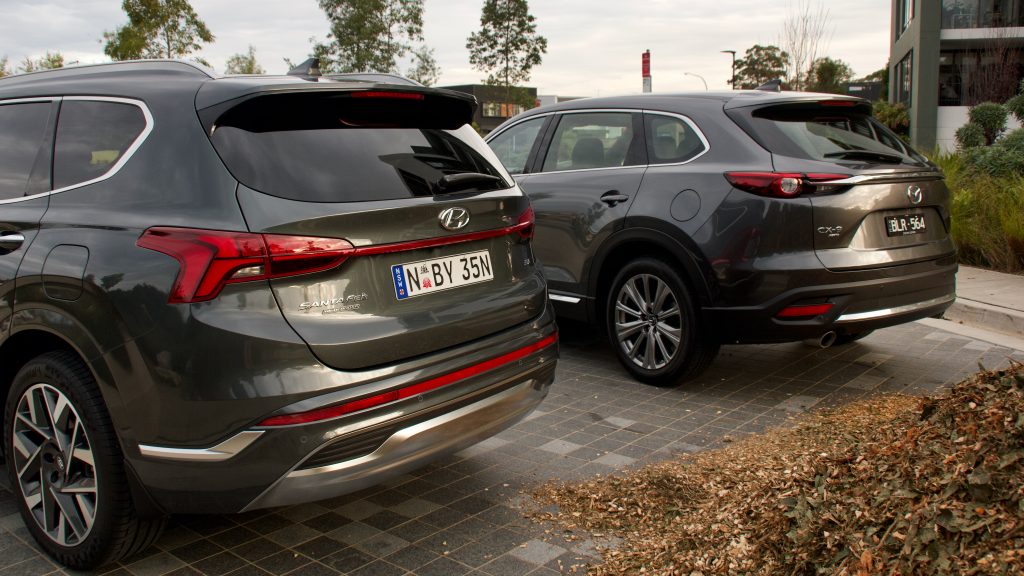
Yes, Hyundai now offers the even-larger Palisade, but the Santa Fe and CX-9 Azami are priced similarly at around $70,000 drive away. They’re also the sales flag carriers for larger cars from both brands and for a lot of people, they’re the models for both brands. So, which is best? Let’s find out.
The 2021 Hyundai Santa Fe takes an early lead with value for money
We tested the top-spec versions of both cars, which start at around $20,000 more than the entry-level specs. Priced from $61,700 plus on-road costs, the 2021 Hyundai Santa Fe Highlander V6 2WD tested is $4,490 less expensive than the 2021 Mazda CX-9 Azami 2WD – but factor in drive away costs and the gap narrows as the Santa Fe is $66,896 drive away, and the CX-9 is $68,990 drive away ($2,094 difference).
Both these cars are front-wheel drive, though all-wheel drive is available if you want it. Hyundai pairs AWD with a 2.2-litre turbo diesel engine that’s priced at $70,571 drive away – the diesel is 100 per cent worth the extra cost but more on that later – and the AWD version of the CX-9 is $73,490 drive away, but it keeps the same 2.5-litre turbo petrol engine.
The CX-9 we photographed is the new CX-9 Azami LE, which adds second row captain’s chairs that are heated/cooled and electrically adjustable, but it’s $77,895 drive away and unless you’re using it for transporting people solely to the airport, we’d stick to the regular Azami.
Both cars feature 20-inch alloy wheels, LED exterior lighting, auto lights and wipers, Nappa leather upholstery, heated and cooled front seats, heated steering wheels, heated outboard second row seats, electrically adjustable front seats with driver’s memory, premium sound systems (the Hyundai uses a 10-speaker Harman Kardon system and the Mazda a 12-speaker Bose system), 10.25-inch centre screens with inbuilt navigation, wired Apple CarPlay and Android Auto, digital radio, wireless phone chargers, keyless entry and start, heated and auto-folding mirrors, various USB ports, heads-up displays and sunroofs – the Mazda’s is a disappointingly small port versus the Santa Fe’s huge panoramic unit.
The Mazda features both front and rear daytime running lights, front fog lights and tri-zone climate control to the Santa Fe’s dual-zone, though the Santa Fe features puddle lamps, rear fog lights and vents/a fan speed controller for the third row. The Santa Fe also features a fully digital driver’s display to the Mazda’s part-digital unit, as well as remote start and auto-dropping mirrors.
Both cars offer a high level of standard safety kit, including six airbags, auto emergency braking (AEB) with pedestrian detection, adaptive cruise control with stop and go functionality, lane departure warning with lane keep assist, blind-spot monitoring with rear cross-traffic alert, driver attention monitoring, speed sign recognition, front and rear parking sensors, 360-degree parking cameras, automatic rear braking and auto high beam.
Although its curtain airbags don’t extend to the third row of seating – a huge oversight in our opinion – the Hyundai does offer more active safety tech with a blind-spot camera, lane trace assist, rear occupant alert, safe exit assist and both cyclist and intersection assist for the AEB system. The Mazda does feature Matrix headlights, though, which are great. Both cars come with 5-star ANCAP safety ratings.
The Hyundai is the better value car in terms of standard kit – and it costs slightly less to buy as well. A win for the Hyundai on the value front.
The Mazda uses a better petrol engine, but…
Choosing a front-wheel drive version of the Santa Fe gives you a petrol engine (a diesel is available on AWD models) but petrol power is compulsory on all CX-9 models. In the case of the 2021 Hyundai Santa Fe, it’s a 200kW/331Nm 3.5-litre V6 that’s matched to an eight-speed automatic transmission. The CX-9 features a smaller 2.5-litre four-cylinder engine that’s turbocharged – it makes less power at 170kW but almost 100Nm more torque at 420Nm. All CX-9s use a six-speed automatic.
Out of these two engines, the Mazda’s is clearly the one to choose. Thanks to its abundance of torque (the full 420Nm is made at just 2,000rpm), the CX-9 is grunty, which is a direct contrast to the Santa Fe – its maximum 331Nm is made at a high 5,000rpm. This means you need to rev the Santa Fe, which pushes its fuel consumption even higher. Sure, the Santa Fe really gets into its stride at higher revs with the full 200kW made at 6,400rpm, but you shouldn’t need to rev it that high to get motion. When you do, it’s not that fast either, and the CX-9 feels noticeably quicker everywhere.
Combined fuel consumption is rated at a high 10.9L/100km for the 2021 Hyundai Santa Fe V6, and 8.4L/100km for the FWD CX-9, though this varied wildly in our testing. We averaged 14.2L/100km in the Santa Fe (the best we got was 9.8L/100km on a highway run) and a better 10.4L/100km in the CX-9 (including one highway run that achieved 7.6L/100km). The Santa Fe’s high 244g/km CO2 emissions rub further salt into the wound – the Mazda is better at 197g/km, though hardly a match for the new Toyota Kluger hybrid’s 128g/km. Both cars run on 91RON fuel – though apparently putting 98RON in the Mazda ups the power to 184kW.
So, the Mazda wins the drivetrains sections, but a much better option exists in the Santa Fe: the 148kW/440Nm 2.2-litre four-cylinder diesel that’s matched to an AWD system and eight-speed dual-clutch automatic transmission as standard. In our testing, we achieved as little as 6L/100km in highway driving, and the diesel’s low-end torque makes it far more drivable as well.
There are both hybrid and plug-in hybrid versions of the Santa Fe coming later in the year, but for now, the diesel is the choice. We also wonder why the 2.5-litre turbo petrol that’s offered in US-spec Santa Fes isn’t offered in Australian models – we loved it in the new Sonata N Line that we tested recently.
In this comparison however, it’s the Mazda that fights back with a more accomplished drivetrain along with better efficiency.
Both ride and handle very well for such big cars
Gone are the days where such big vehicles felt like tanks around corners – both the 2021 Hyundai Santa Fe and 2021 Mazda CX-9 demonstrate that big SUVs can both ride and handle with reasonable spunk. They’re both very comfortable behind the wheel with great seating positions, a lot of adjustability in driving positions, relatively low road noise (especially in the Mazda) and good visibility (especially in the Hyundai). Both cars are also excellent grand tourers capable of doing Sydney to Melbourne easily in a day.
Like all other Hyundai and Kia products sold locally, the Santa Fe is tuned specifically for Australia. A Santa Fe in North America or Europe would feel completely different to drive, and thanks to our rubbish roads, we appreciate that the companies go to such trouble for Australian consumers. The results are clear: despite the huge 20-inch wheels of the Highlander spec, the Santa Fe rides very well no matter what surface you’re driving on. Its body control is excellent, and the steering is also lighter and more fluid than the stiff rack in the Mazda. It handles well through corners too, being safe and secure when needed without ever setting your heart racing with razor sharp responses. Buy a Hyundai i30 N for that.
The Mazda differs from the Hyundai in that it’s tuned to be slightly sportier, which befits the ‘premium’ image that Mazda is going for these days. It’s certainly more fun to punt on a back road on a Sunday morning if that’s what you’re after – we doubt many are – but it’s slightly firmer in everyday driving, in both the ride quality and the steering, which is oddly stiff. But behind the wheel, the Mazda is actually the more luxurious choice – the road noise is almost zero, the safety systems are less intuitive, and the 12-speaker Bose sound system is excellent.
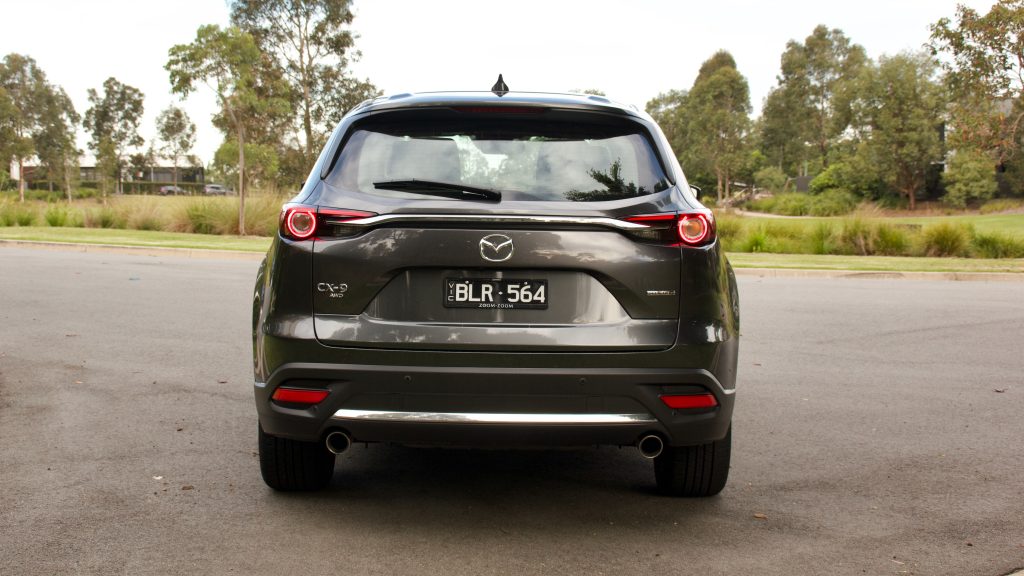
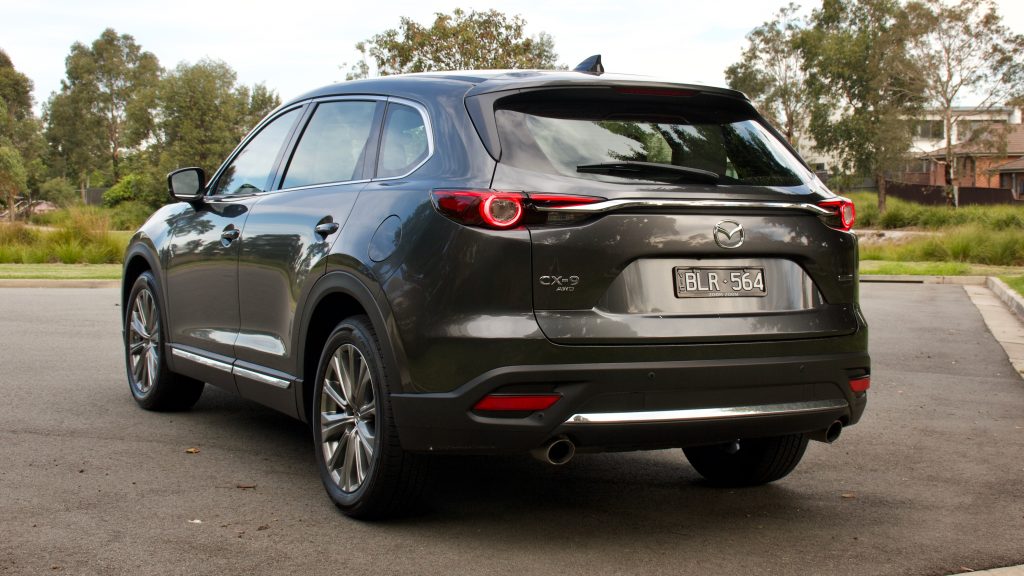
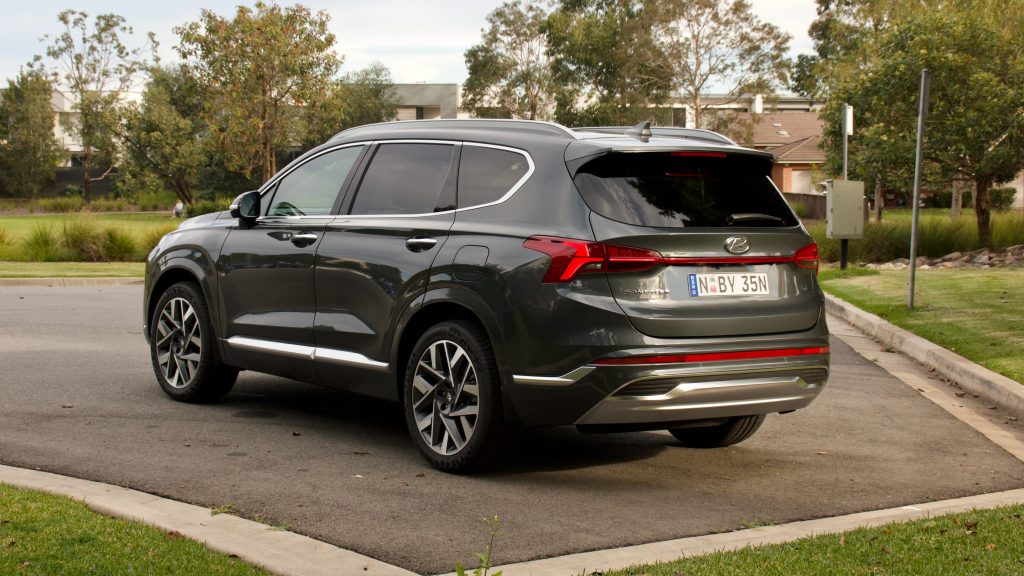
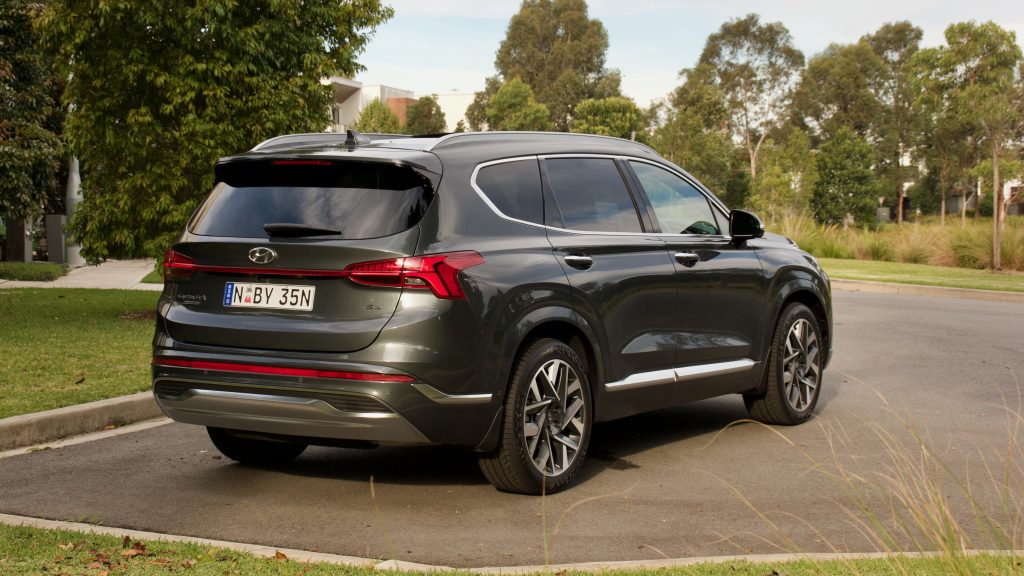
The Mazda is just that touch more sophisticated behind the wheel, and takes out another victory against the Santa Fe. Whilst not in any capacity a bad car to drive, the Hyundai Santa Fe is a shade less polished than Mazda’s flagship CX-9.
Both brands offer a high-quality cabin experience
Both the 2021 Mazda CX-9 and 2021 Hyundai Santa Fe are excellent in offering both premium yet functional interiors that cater for both drivers and their passengers. The materials used in both cars are plush and soft to touch, with stitched faux leather dashboards, Nappa leather upholstery and high-quality screens. The switch gear in the Mazda is higher quality than the Santa Fe with a more damped feel across the cabin – not that the Santa Fe offers bad quality. Feel free to dispel any ideas that Hyundai cannot make a beautifully crafted interior.
Both the CX-9 and Santa Fe feature 10.25-inch centre screens with satellite navigation, digital radio and wired Apple CarPlay and Android Auto. The Hyundai’s screen is controlled through touch with just the right number of hard buttons below, whereas the Mazda’s is controlled solely through the controller wheel located between the front seats. Screen quality in both cars is excellent, and their 360-degree cameras are very clear as well.
Practicality in both cars is good with large door pockets and gloveboxes, as well as large centre boxes as well. Thanks to its shift-by-wire gearbox selector, the Santa Fe offers storage below the centre console which keeps phones out of sight while driving. The second rows in both cars offer similarly large door pockets, as well as vents, window blinds and centre armrests.
The CX-9’s longer dimensions mean that there is more space on offer in both the second- and third-rows of seats. My six-foot frame did not fit in the Santa Fe’s third row at all, but I was fine in the CX-9 – though the even larger Hyundai Palisade would be a good option for those using the third row of seating more regularly. It would be nice to have the vents from the Santa Fe in the third row of the Mazda, in addition to the two USB ports and cup holders. Having said that, the Santa Fe’s third row doesn’t feature airbags of any kind.
Boot space in the CX-9 is also larger than the Santa Fe with 230-litres behind the third row, and 840L behind the second row – the Santa Fe offers just 130-litres with all seats erected, and 517L behind the second row. Both cars’ middle rows fold relatively flat, and open 2,040L in the Santa Fe and 2,016L in the Mazda. Unlike the Mazda, the Santa Fe features a full-size alloy spare.
By the narrowest margin, it’s the Mazda that comes out on top again after this round, just pipping the Hyundai with a slightly plusher and roomier interior.
Short service intervals hinder the Mazda’s running costs
Both cars come with a five-year/unlimited km warranty – the Hyundai offers just one year of roadside assistance that is topped up with each scheduled service, whereas the Mazda comes with five years as standard for a slightly more complete warranty package.
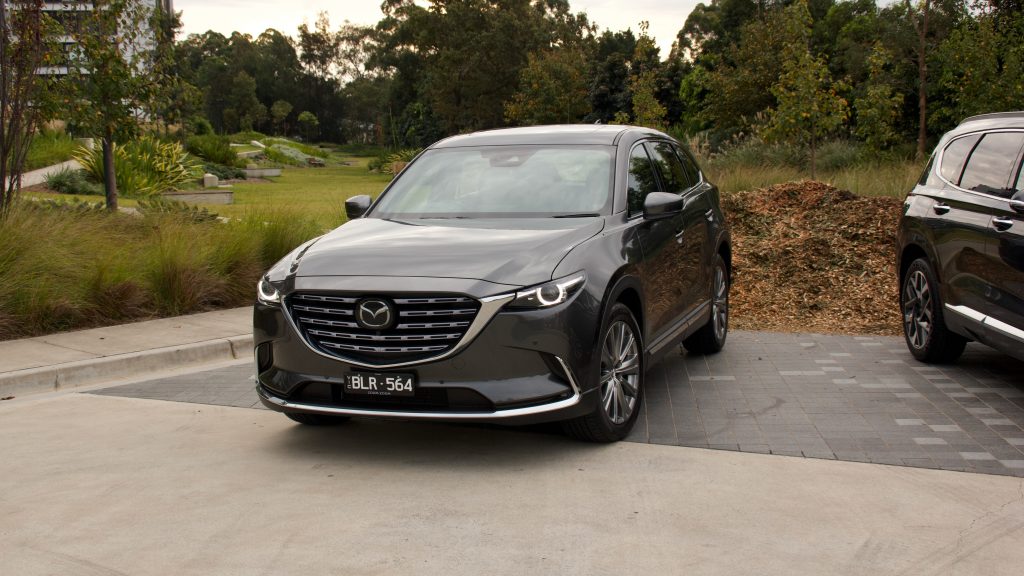
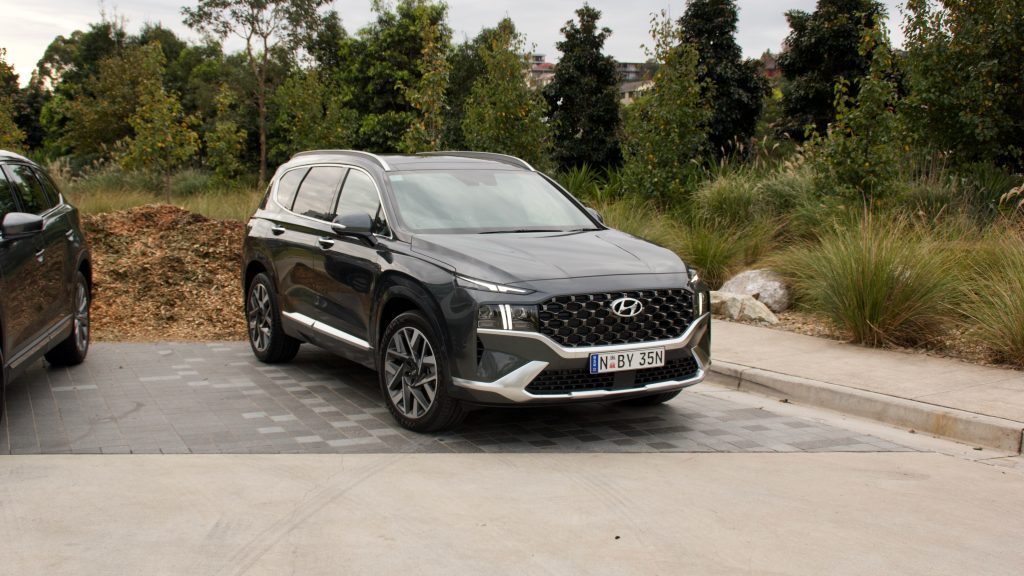
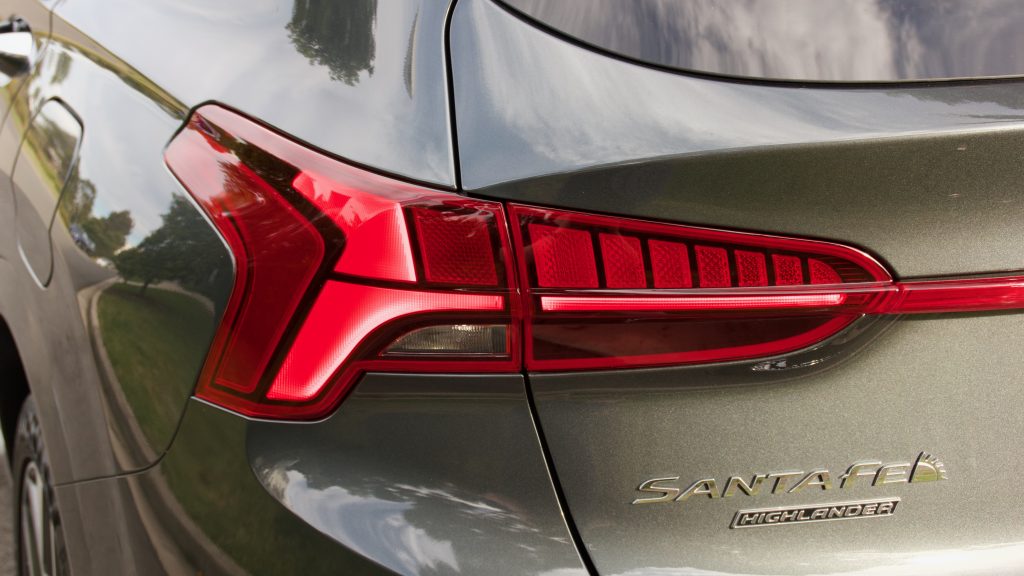
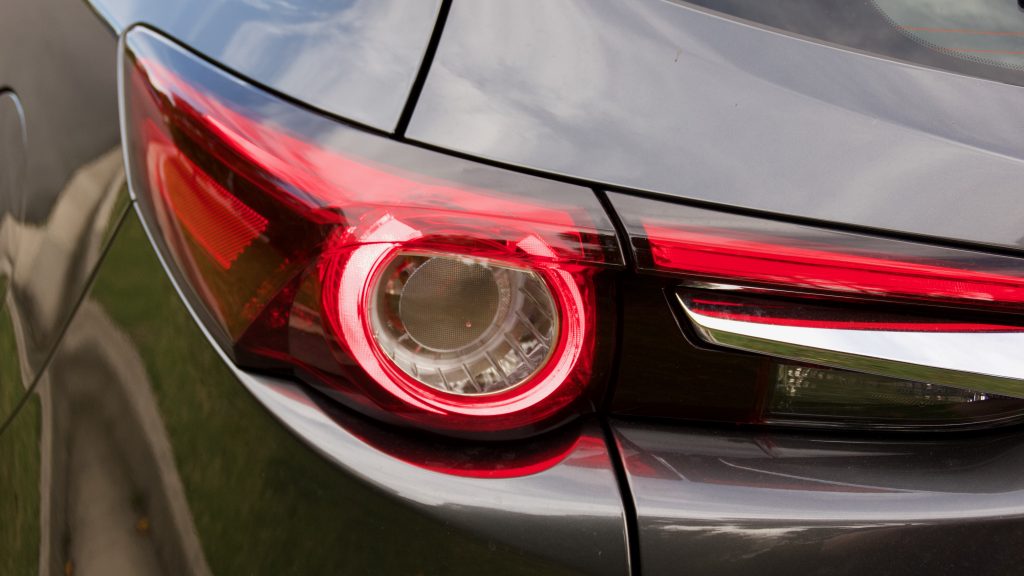
The tables are turned when it comes to service costs though. Over five years/50,000km, the CX-9 costs $2,211 to service ($442 per year), but that’s only to 50,000km thanks to its short 10,000km service intervals. Over the same time period but to 75,000km thanks to longer 15,000km service intervals, the Santa Fe V6 costs $1,995 ($399 per year), making it the more cost-effective car to maintain. Choosing a diesel Santa Fe increases the price to $459 per year or $2,295 in total for 75,000km, but with the same 15,000km intervals as the V6.
Hyundai comes back fighting in the last round, scoring well as the it’s the more convenient and less expensive car to service out of the duo.
Which petrol $70k seven-seat SUV is best? The Mazda CX-9
This comparison has been the toughest we’ve done yet at DiscoverAuto because both the 2021 Hyundai Santa Fe and 2021 Mazda CX-9 are genuinely excellent cars and buyers would do well in either option. We think the Azami spec of CX-9 is bang on what a large SUV should be, and the Santa Fe Highlander should be chosen with the diesel powertrain as the petrol V6 is lacklustre and very thirsty. Both cars display very little in the way of negatives – they’re both not cheap in these specs, the CX-9 doesn’t offer quite as much kit as the Santa Fe, and its 10,000km service intervals are short, while the Santa Fe simply isn’t as large as the CX-9 inside thanks to its shorter dimensions, and its third row of seats isn’t covered by airbags.
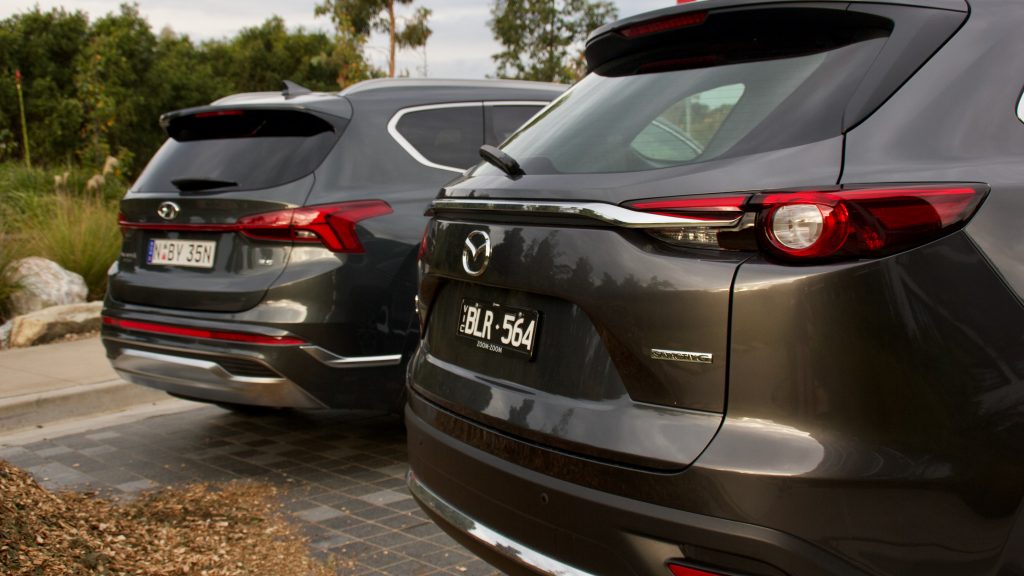
On the flip side, they both offer long lists of positive qualities. The CX-9 is luxurious, comfortable, good to drive, well equipped and spacious on the inside. The Santa Fe isn’t quite as practical, nor is it quite as luxurious as the Mazda it is more cost effective to own and better value for money upfront with a slightly cheaper asking price and a longer list of standard kit. The Mazda CX-9 ever so slightly comes out on top here, nudging out the petrol-powered 2021 Hyundai Santa Fe by the narrowest of margins.
The Mazda is undoubtedly the more luxurious option here with its higher quality materials and more polished switchgear, but in what might be a plot twist, this writer would go with the Santa Fe – with a diesel engine, though. But with this duo, you really can’t go wrong, with both making an excellent choice for ferrying around the family.
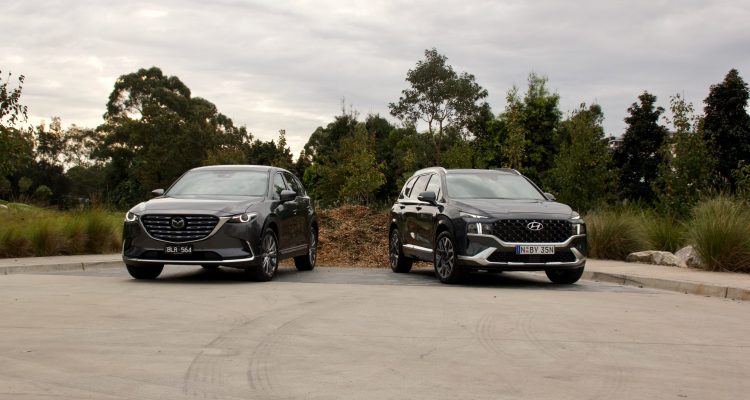
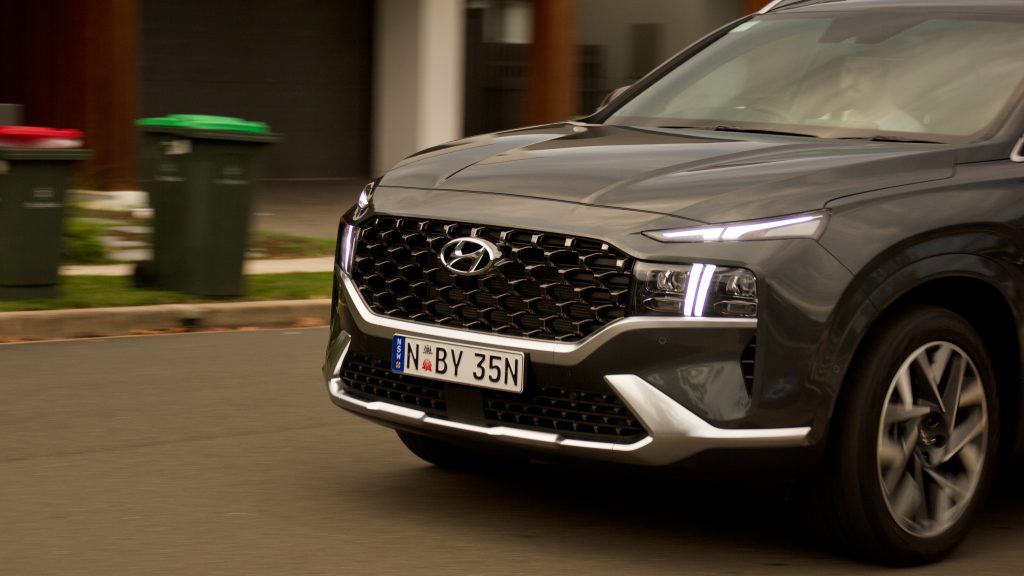
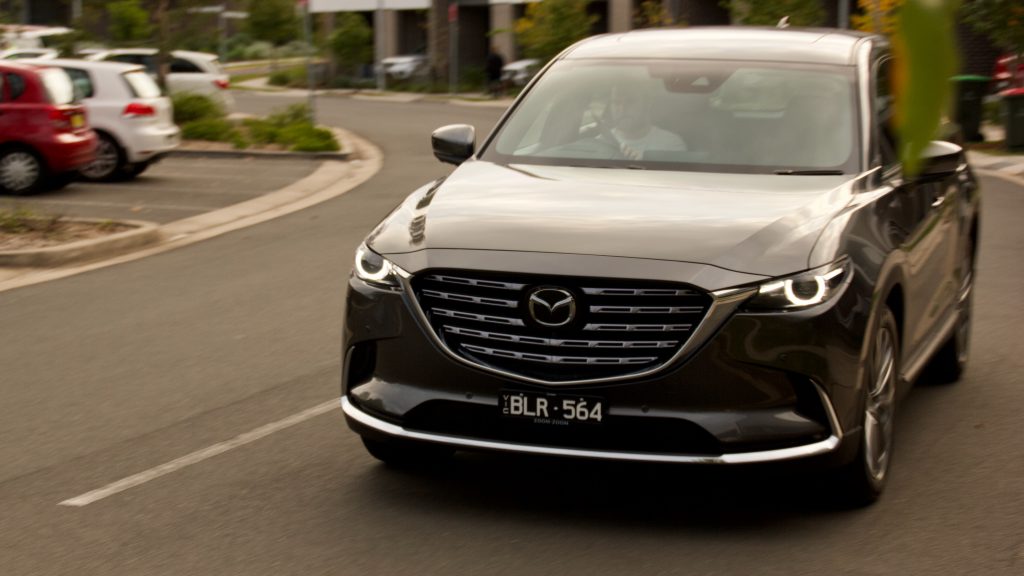
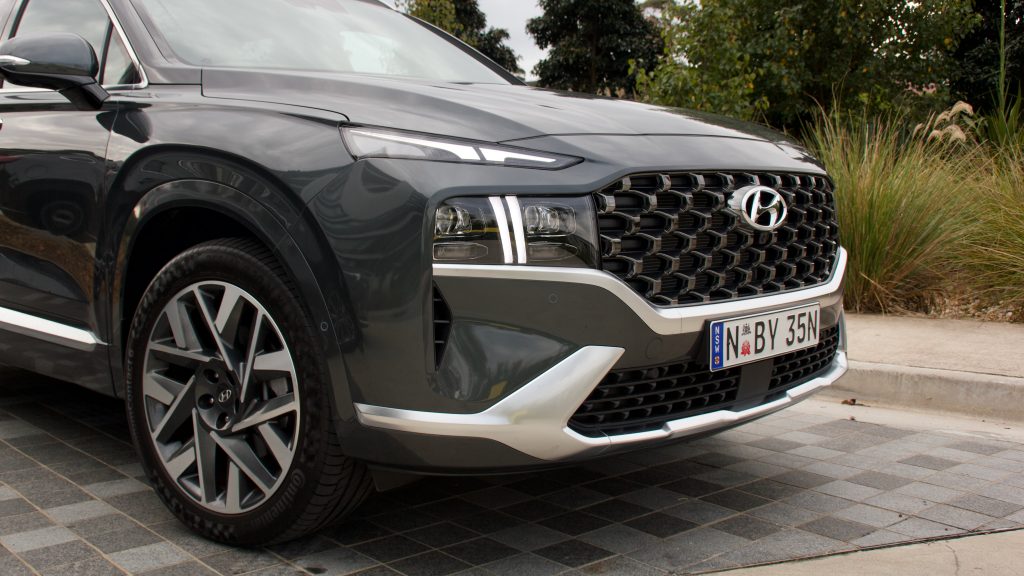
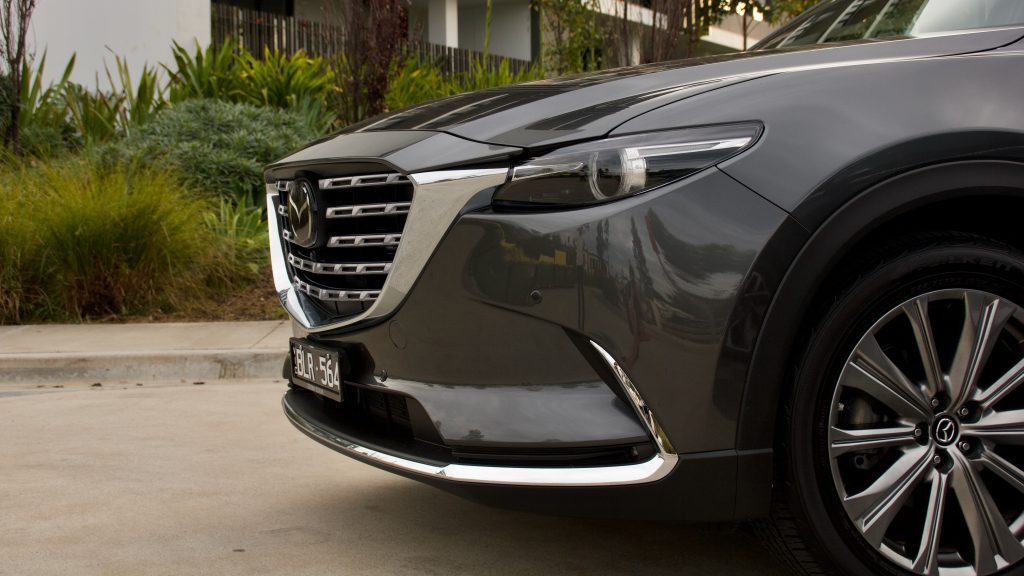
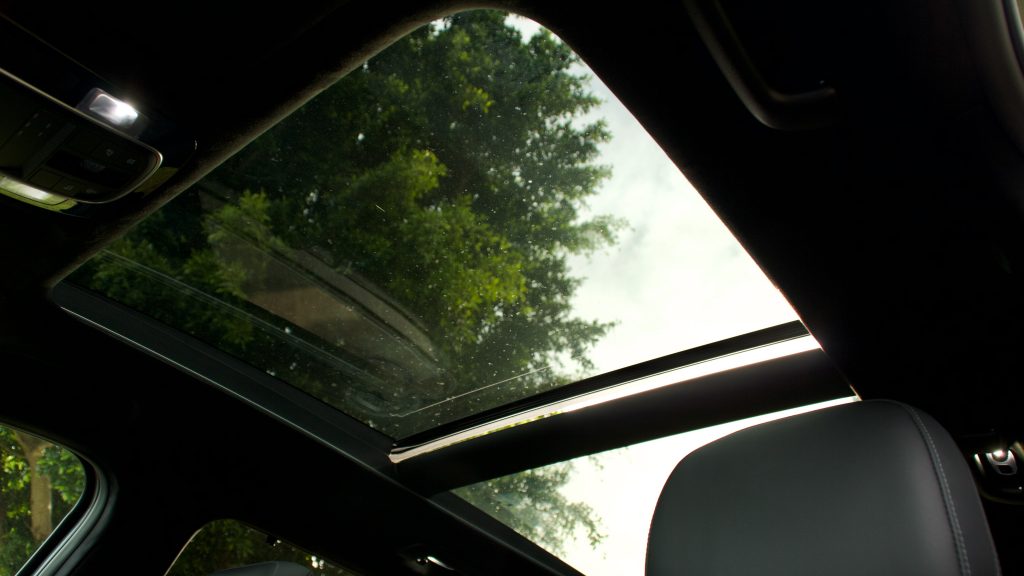
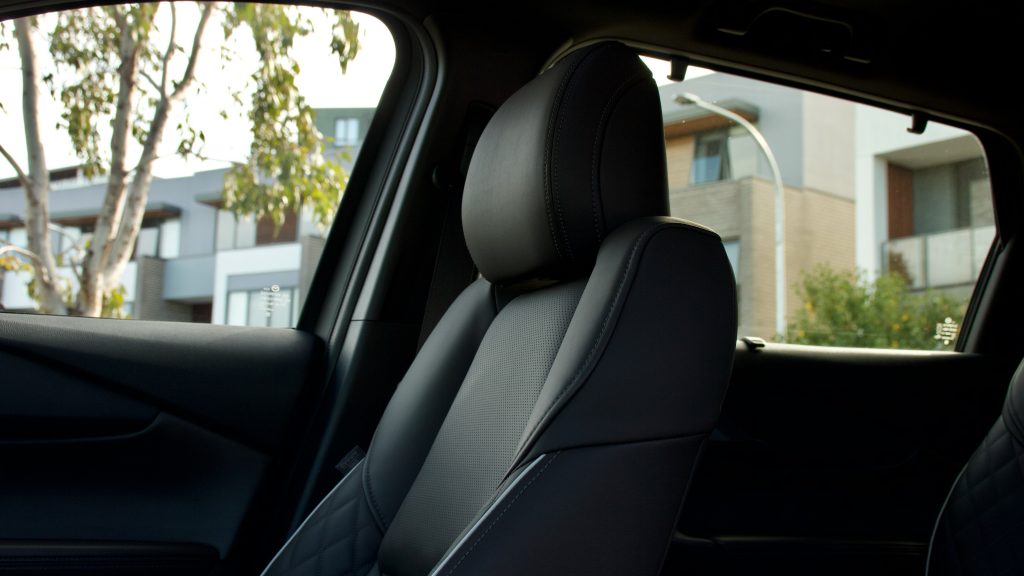
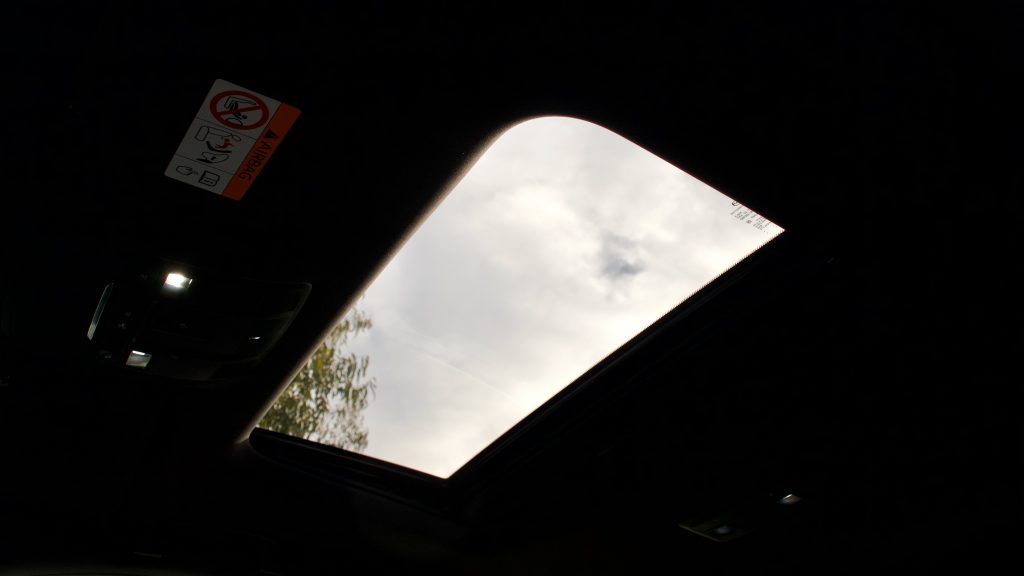
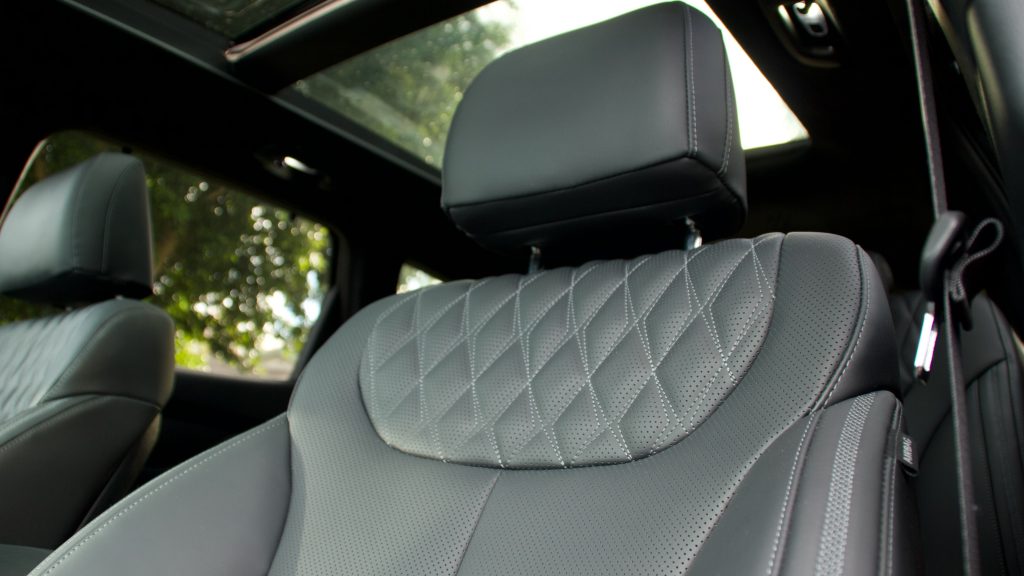
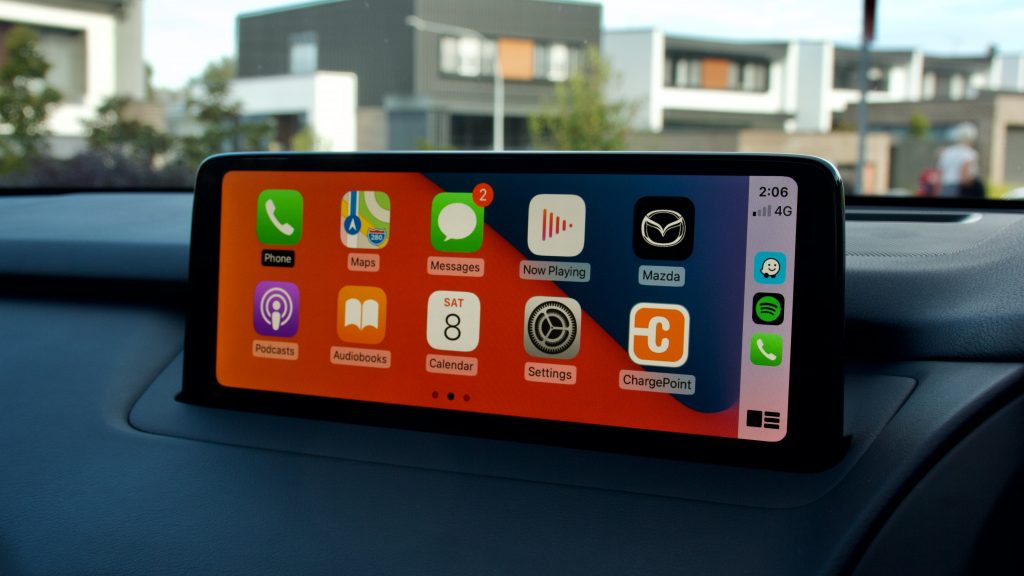

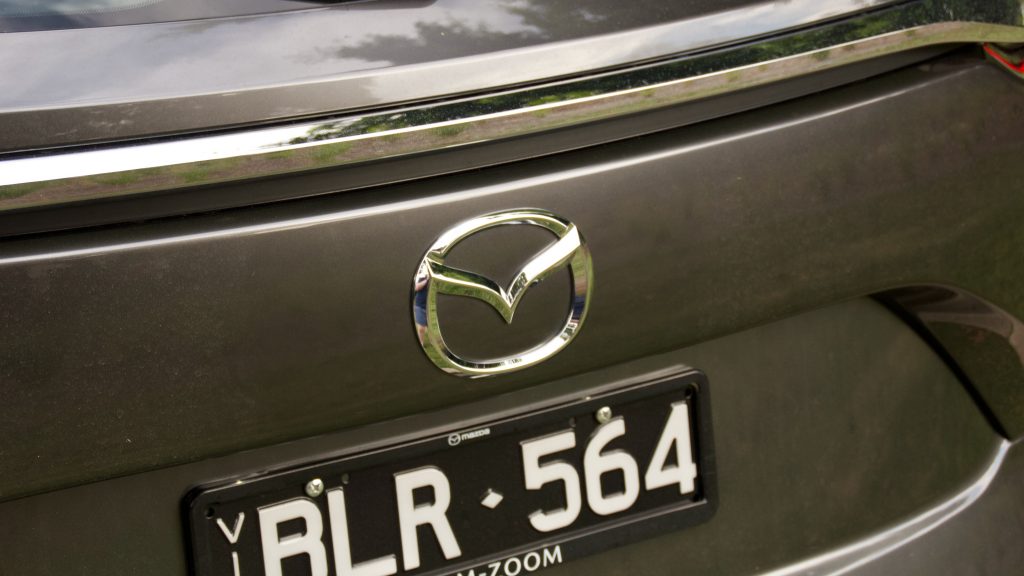
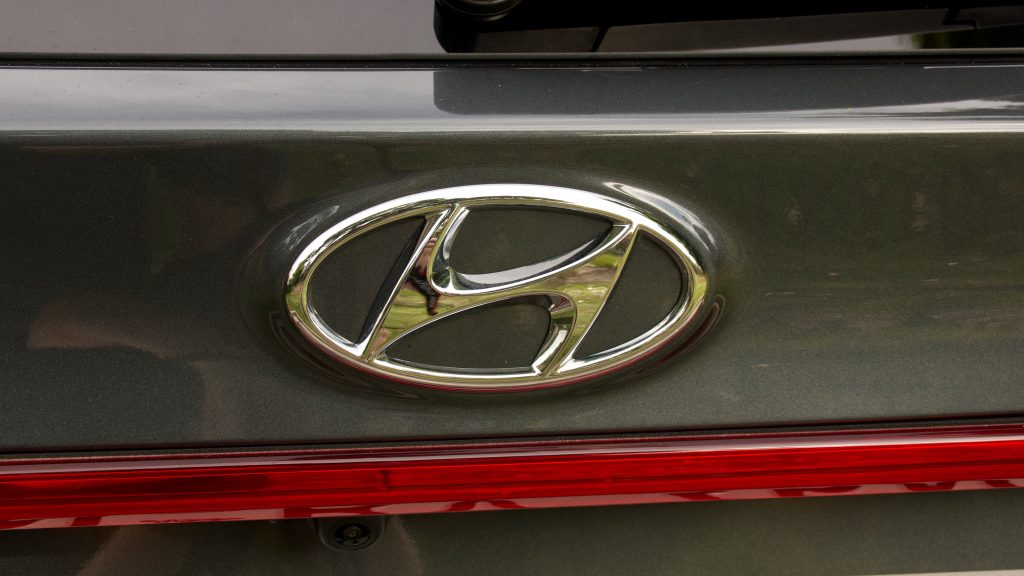
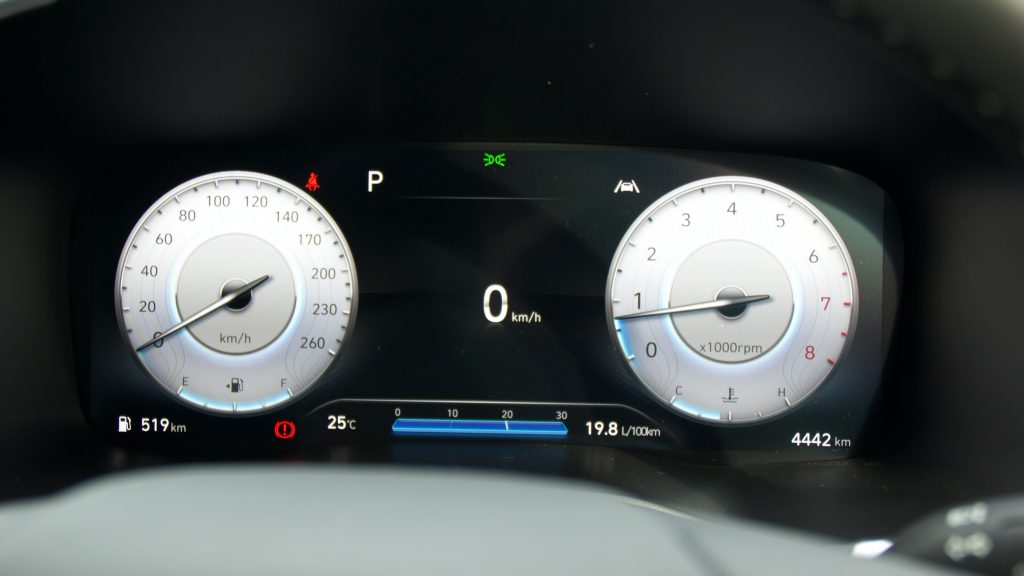
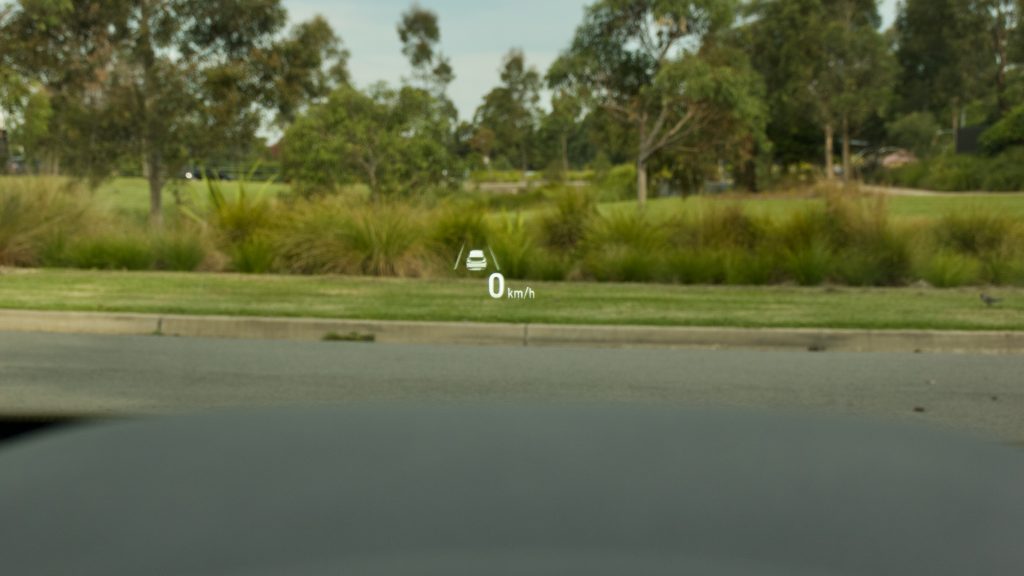
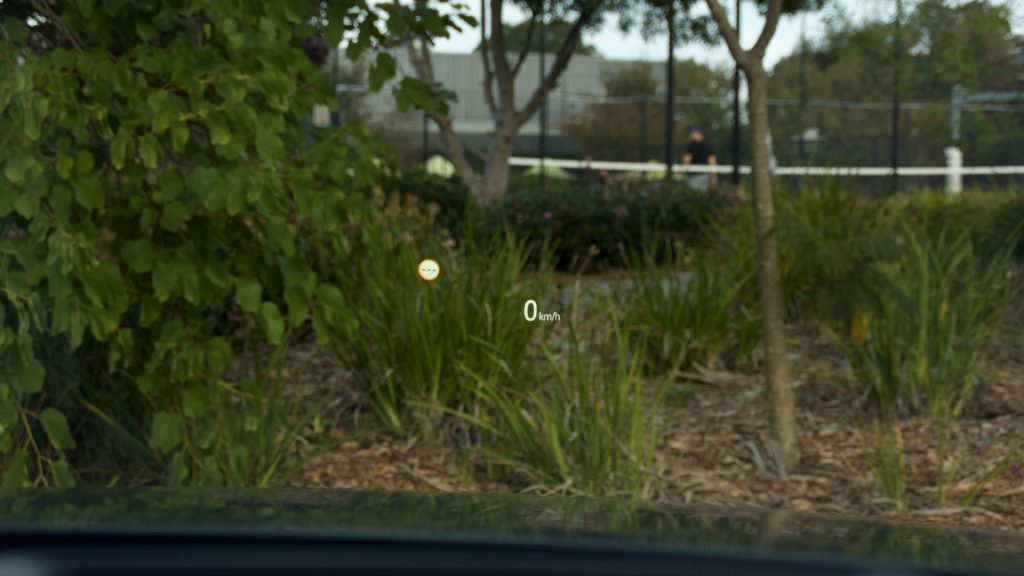
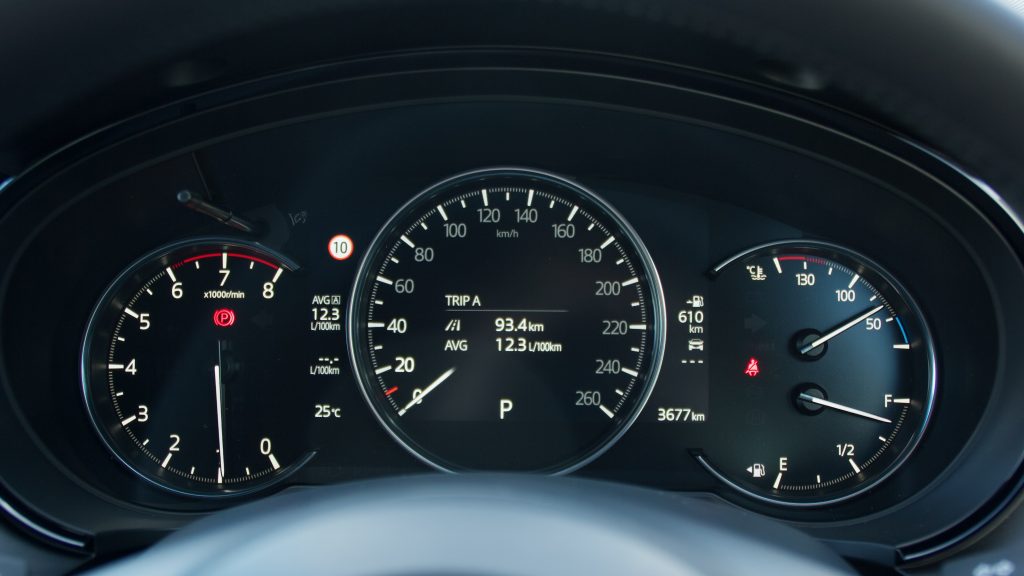
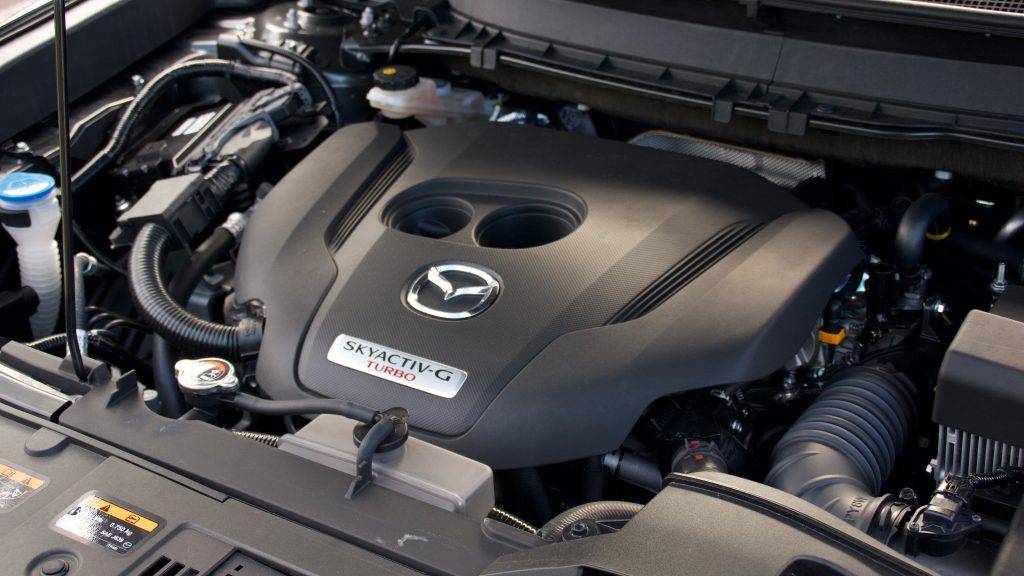
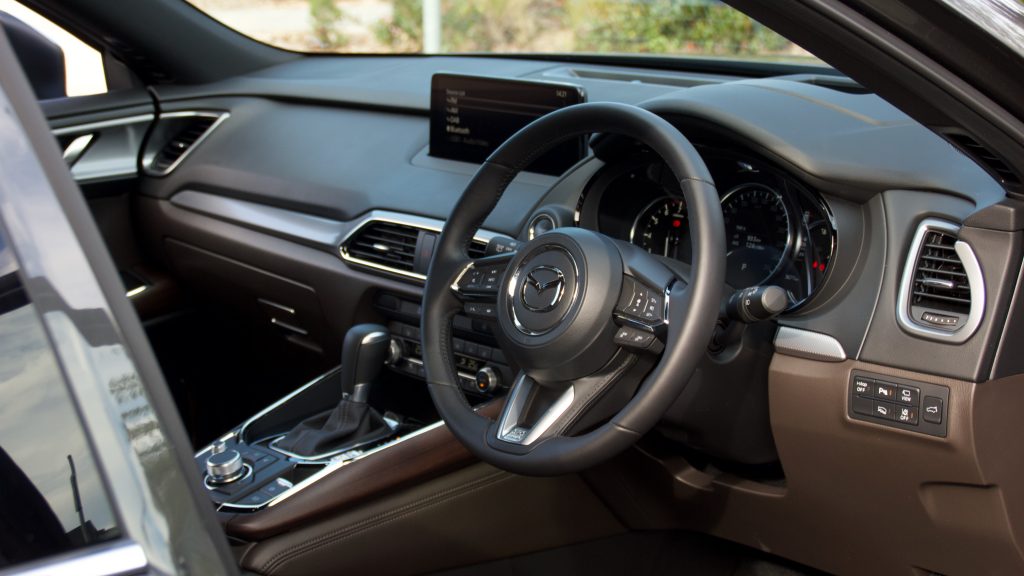
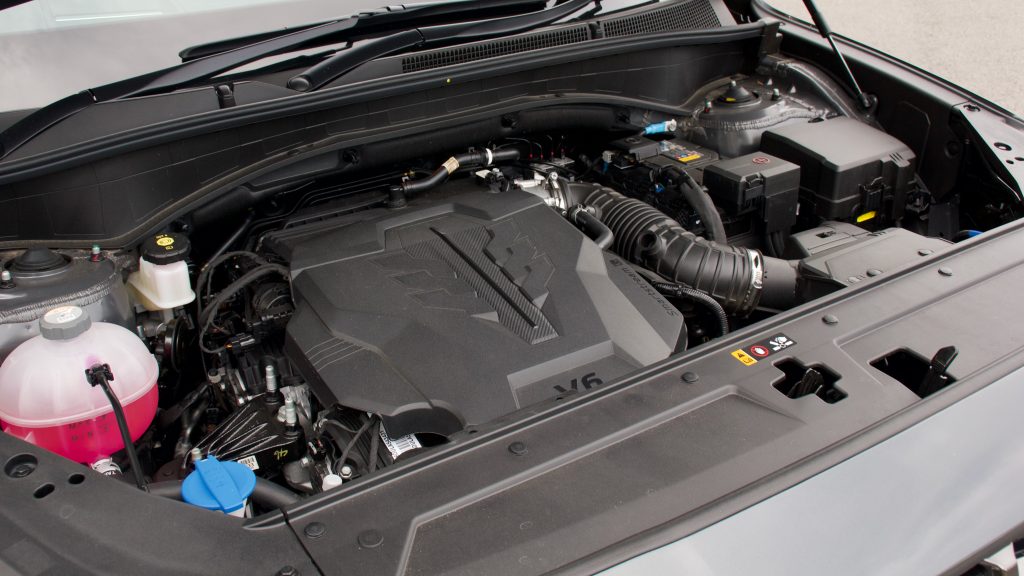
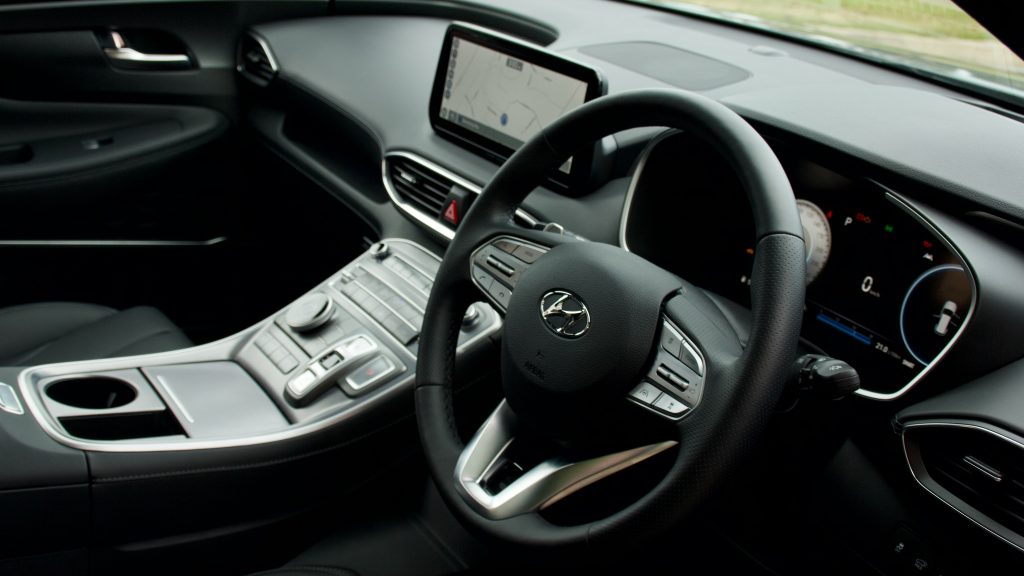
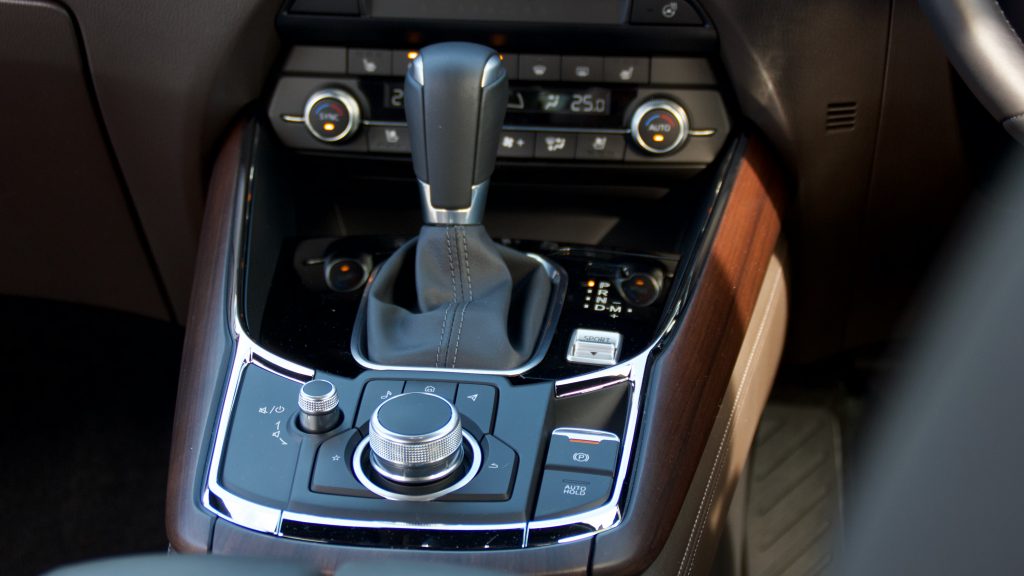
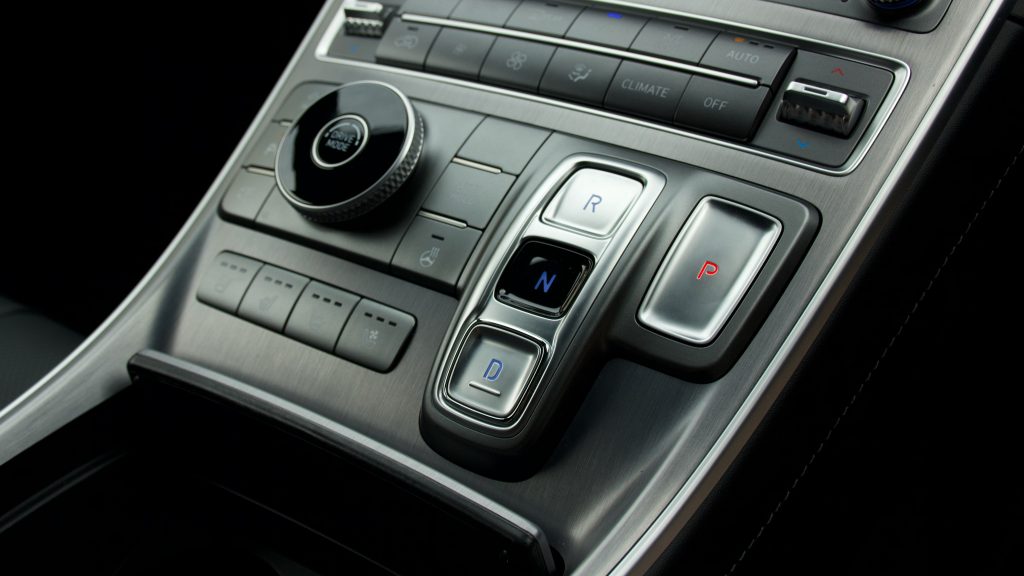
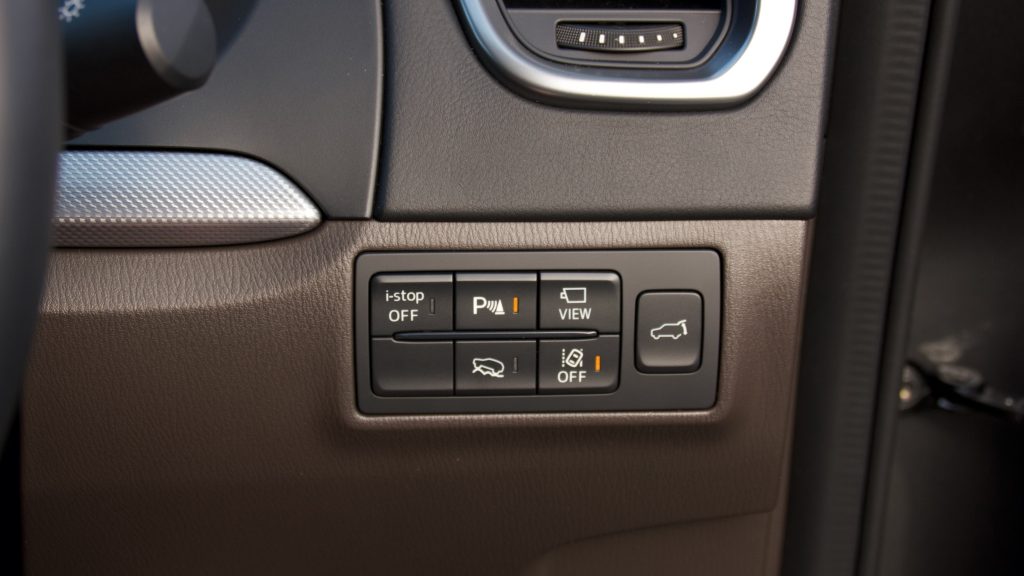
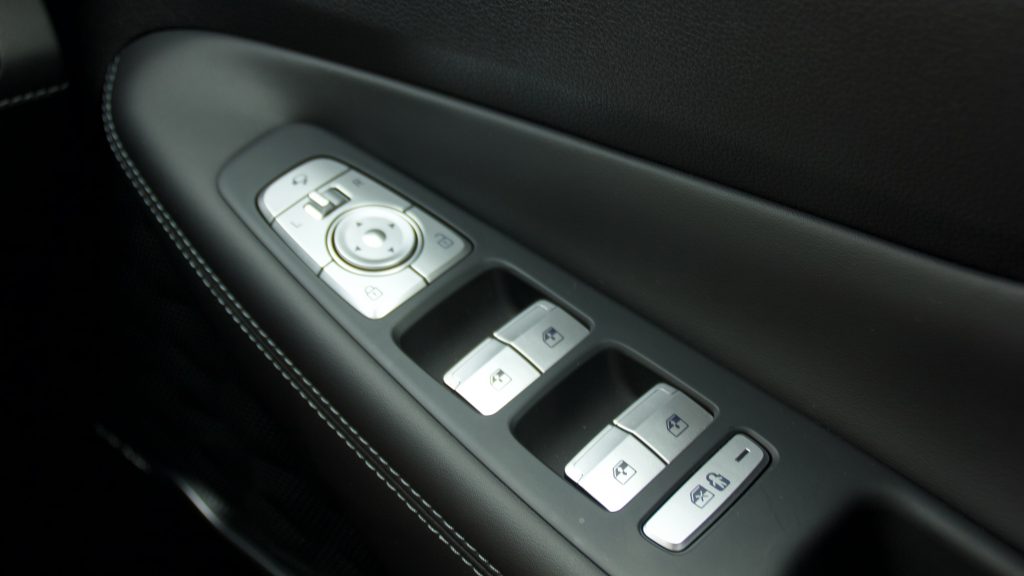
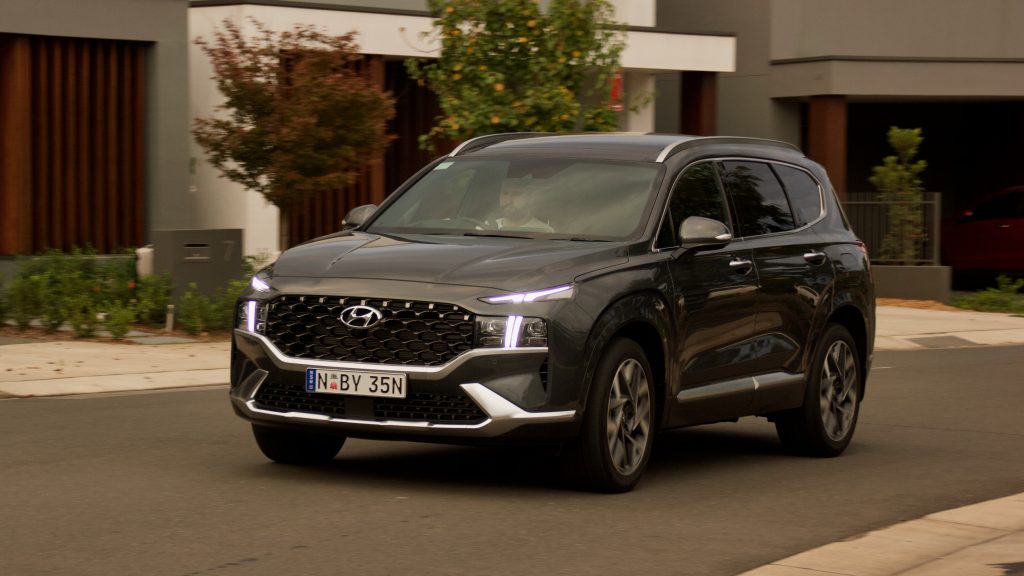
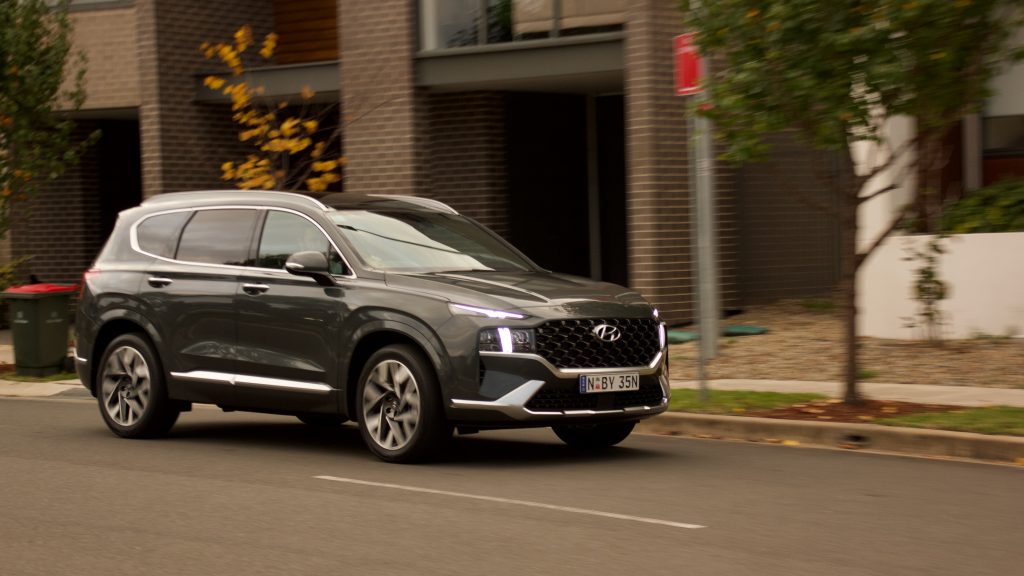
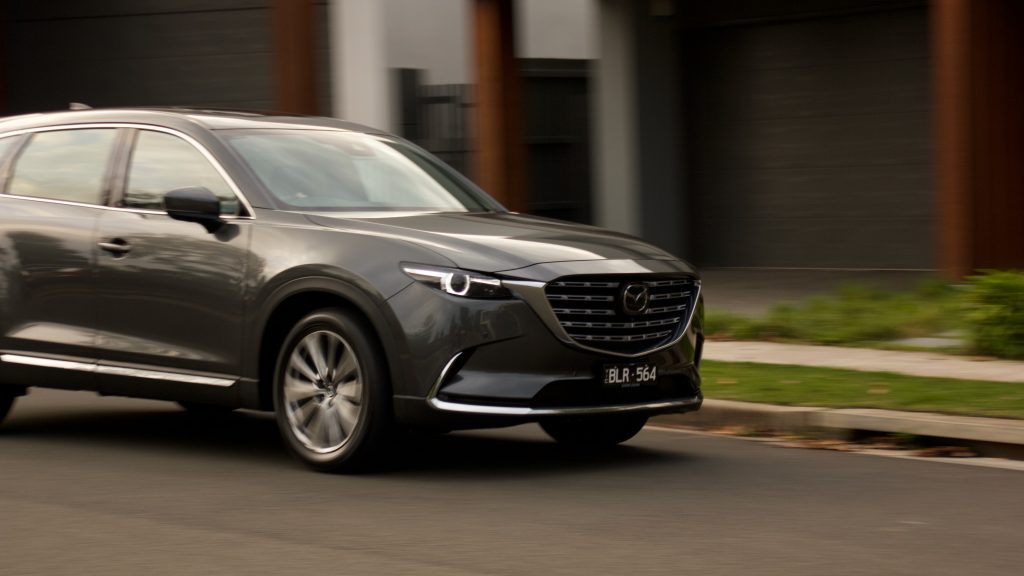
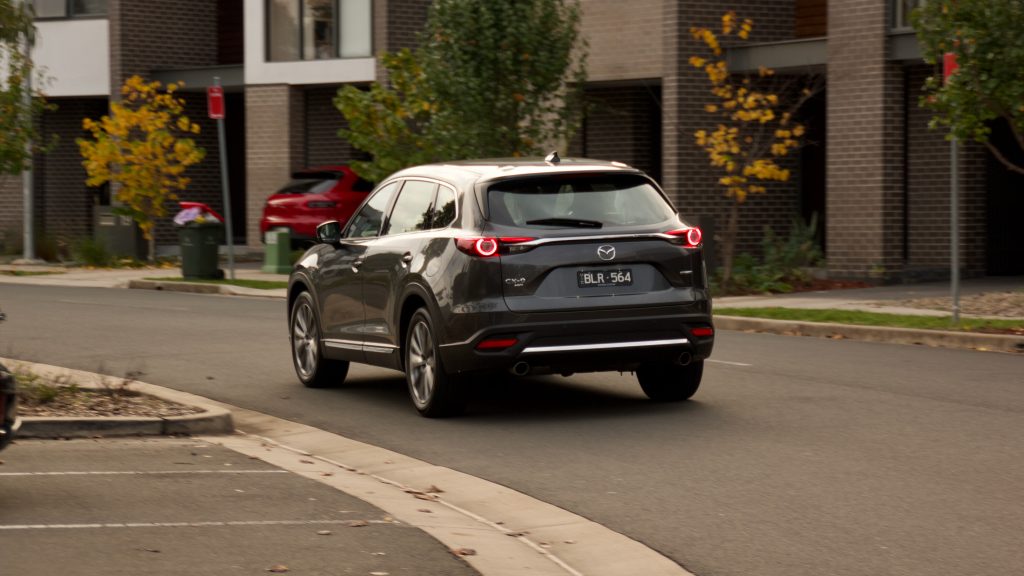
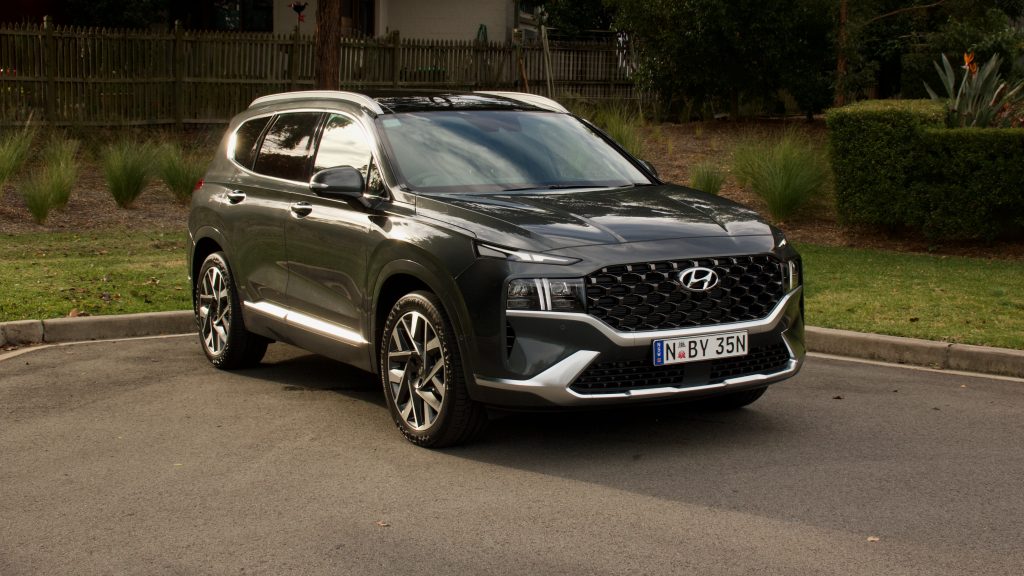
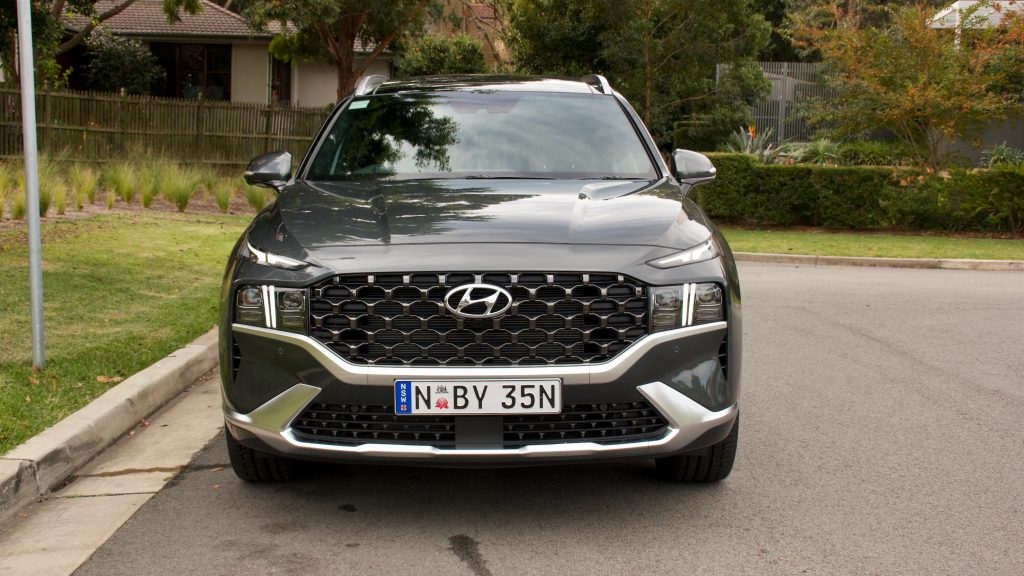
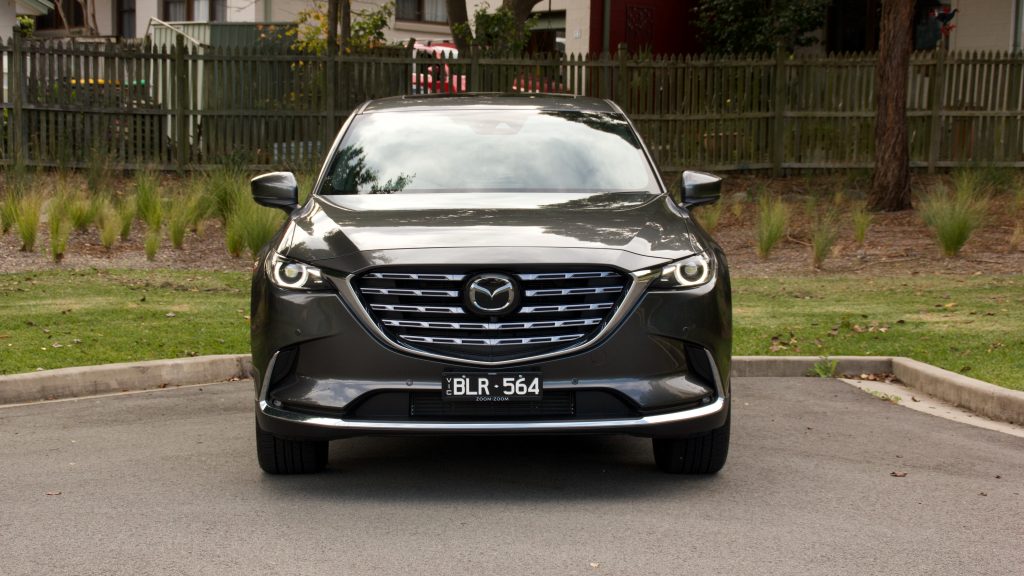
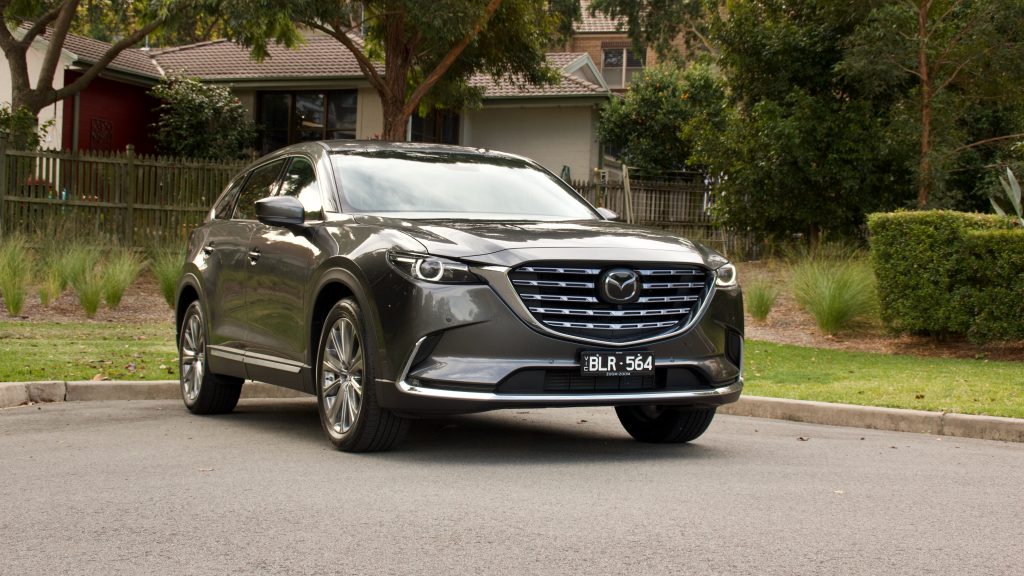
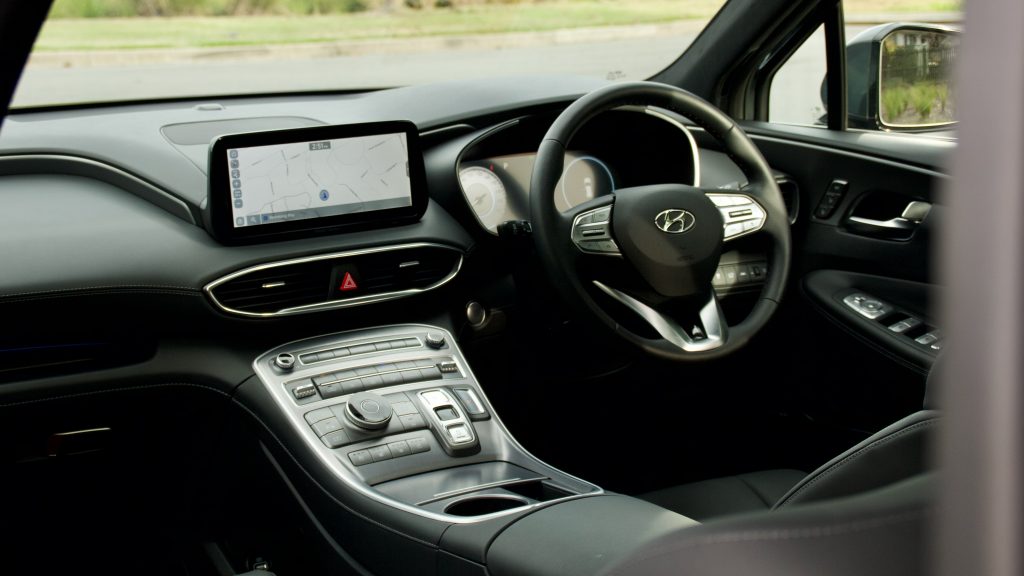
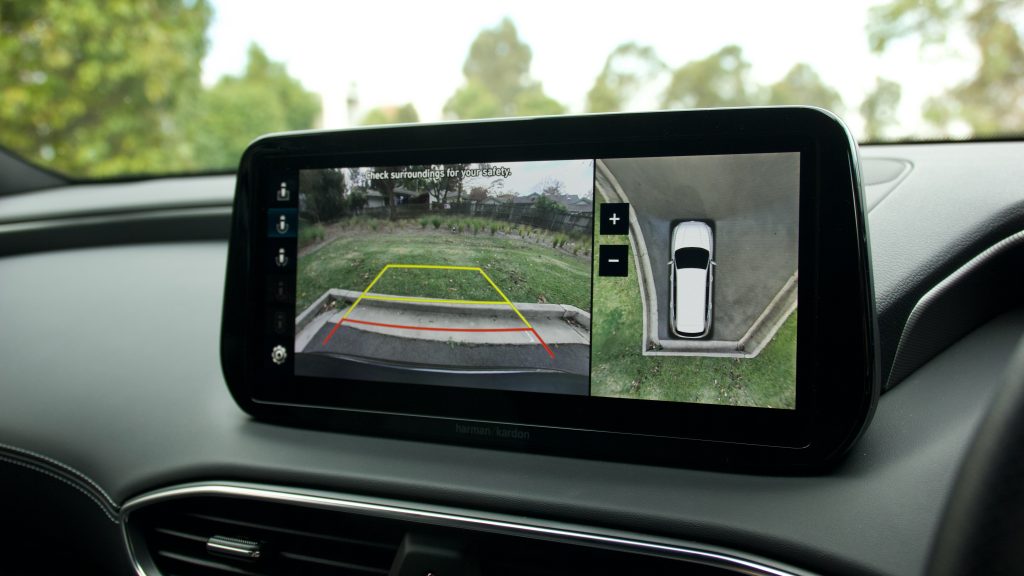
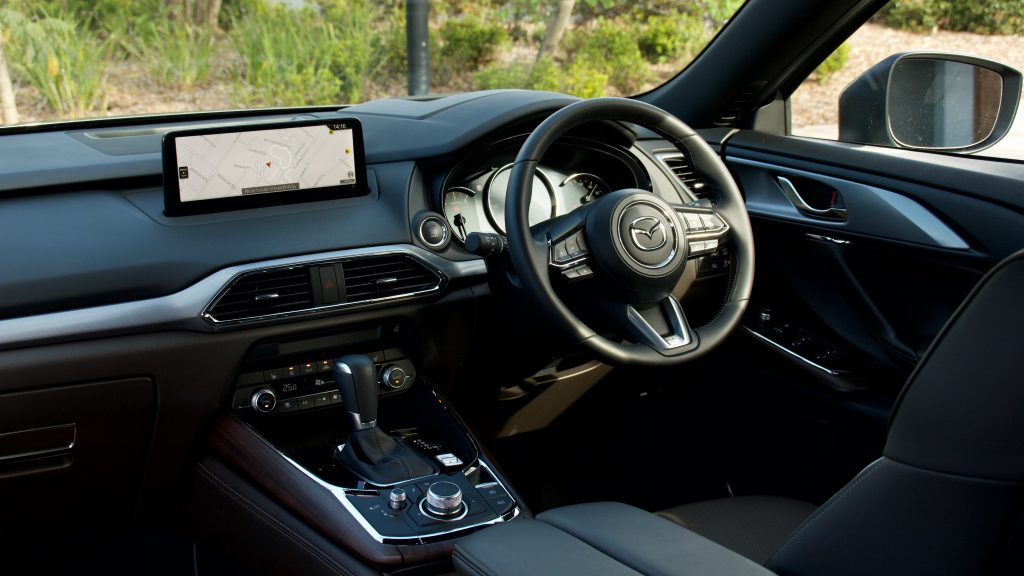
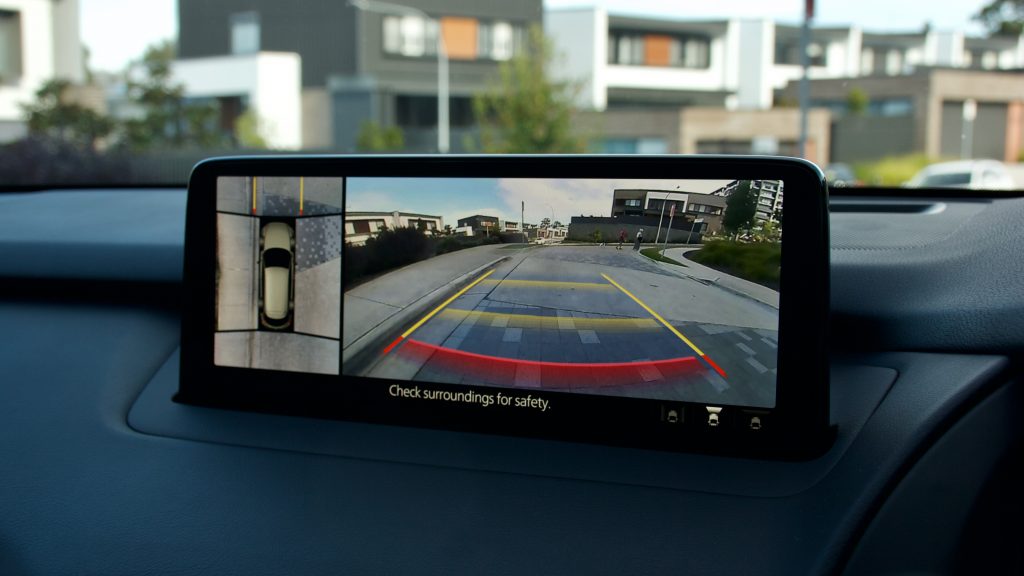
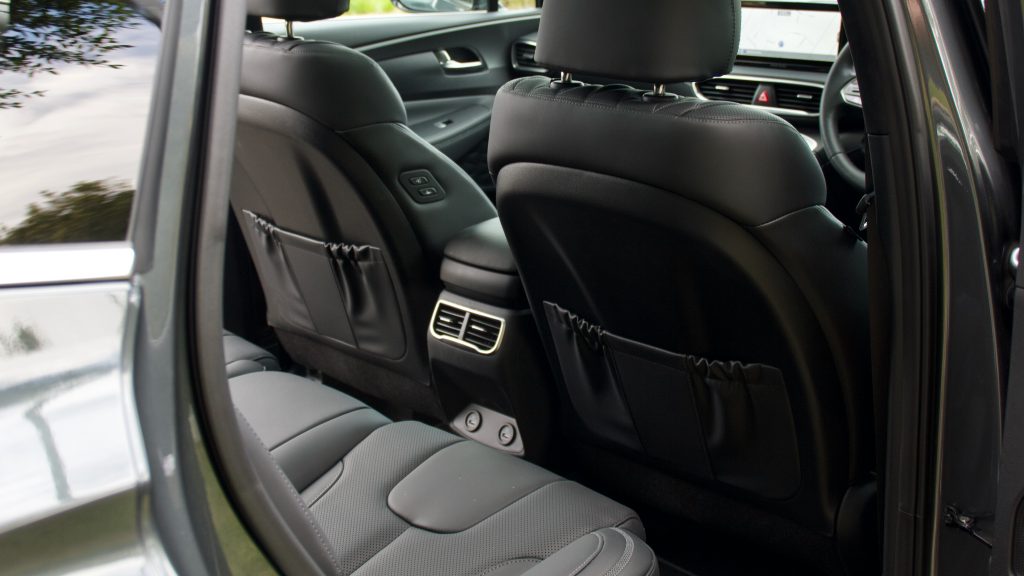
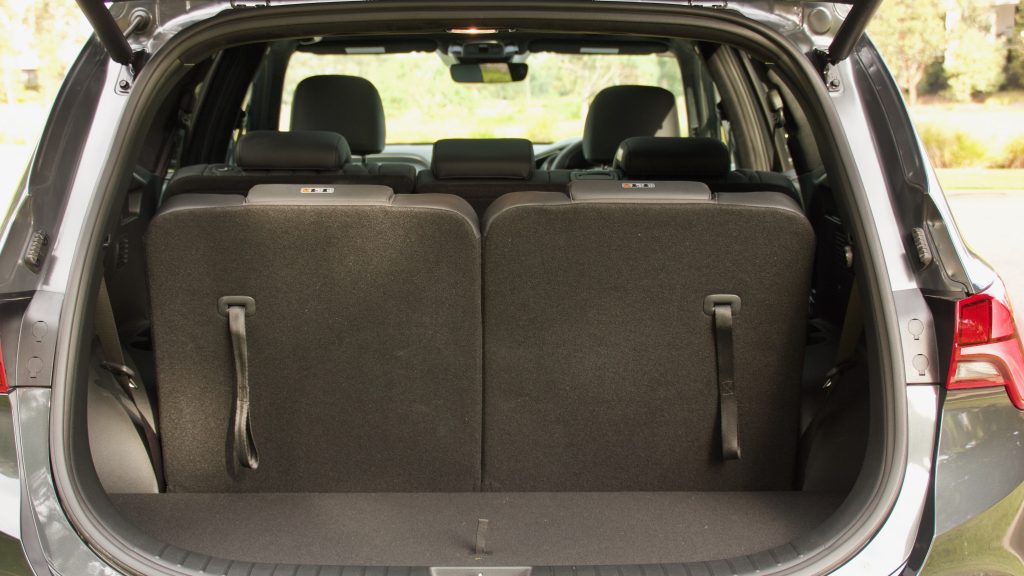
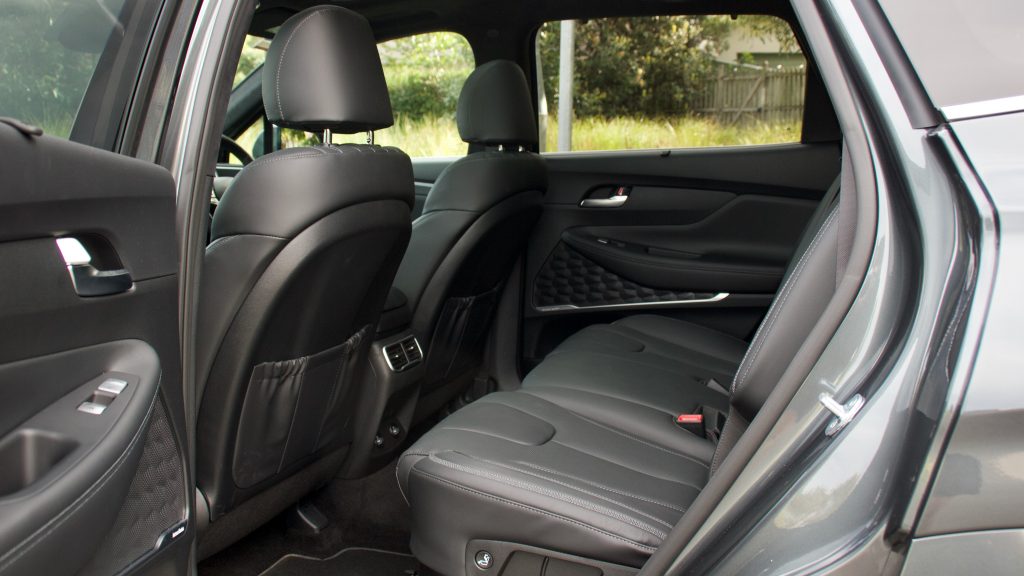
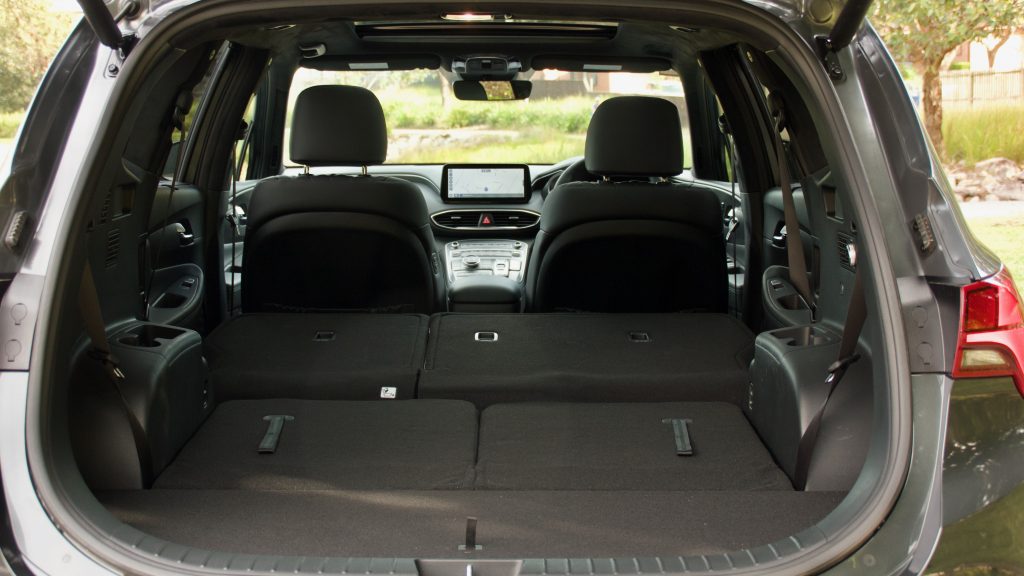
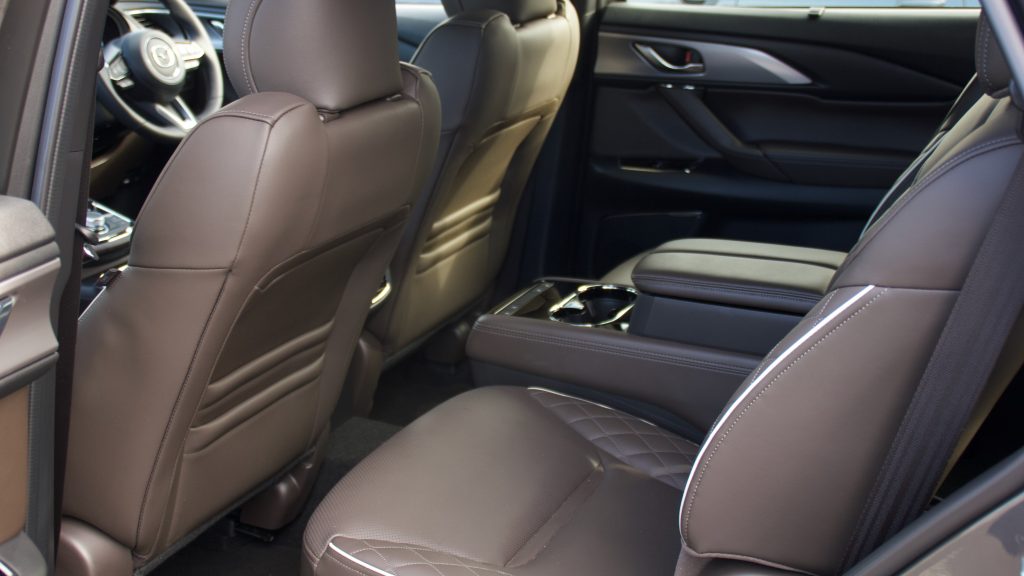
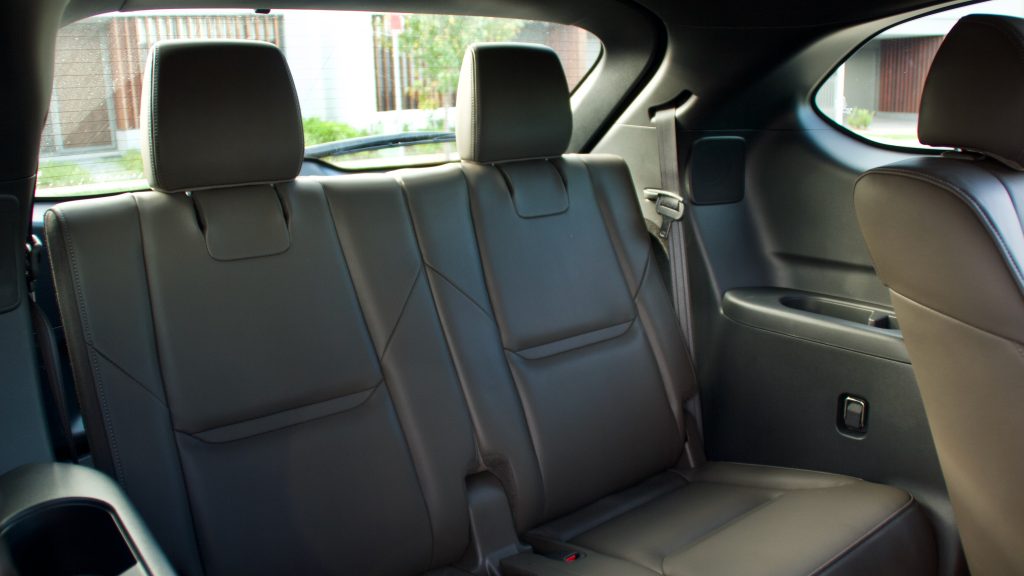
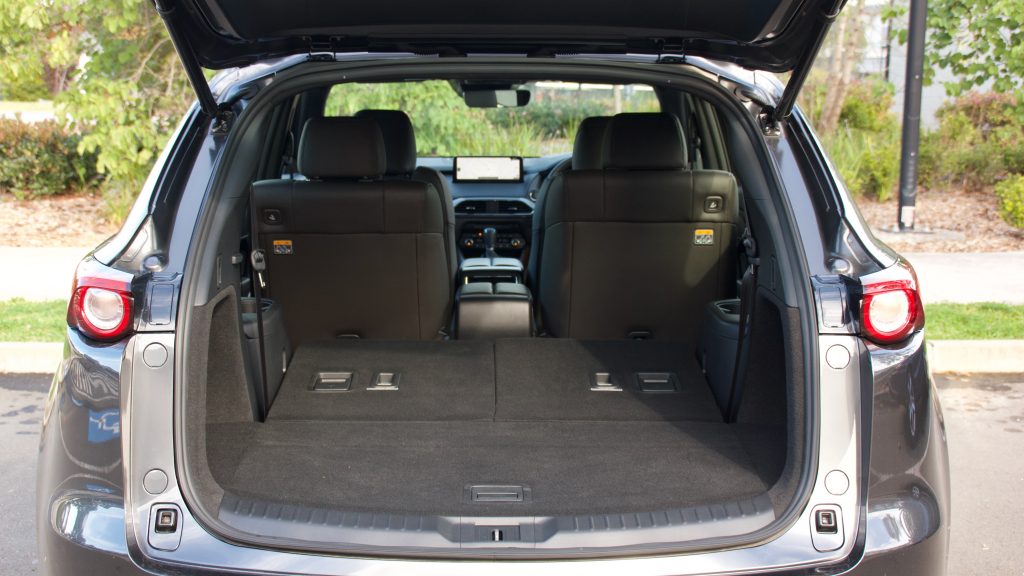
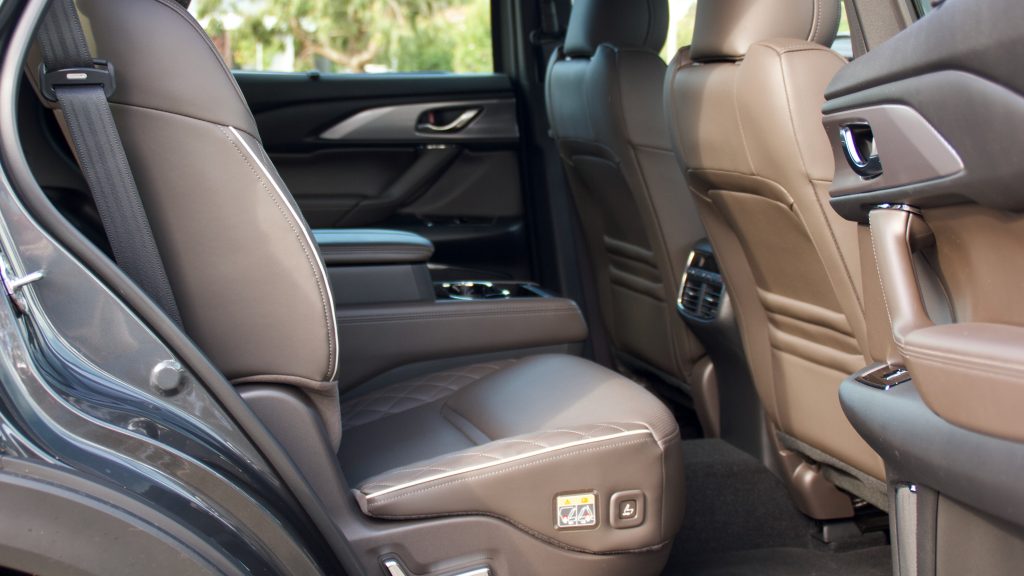
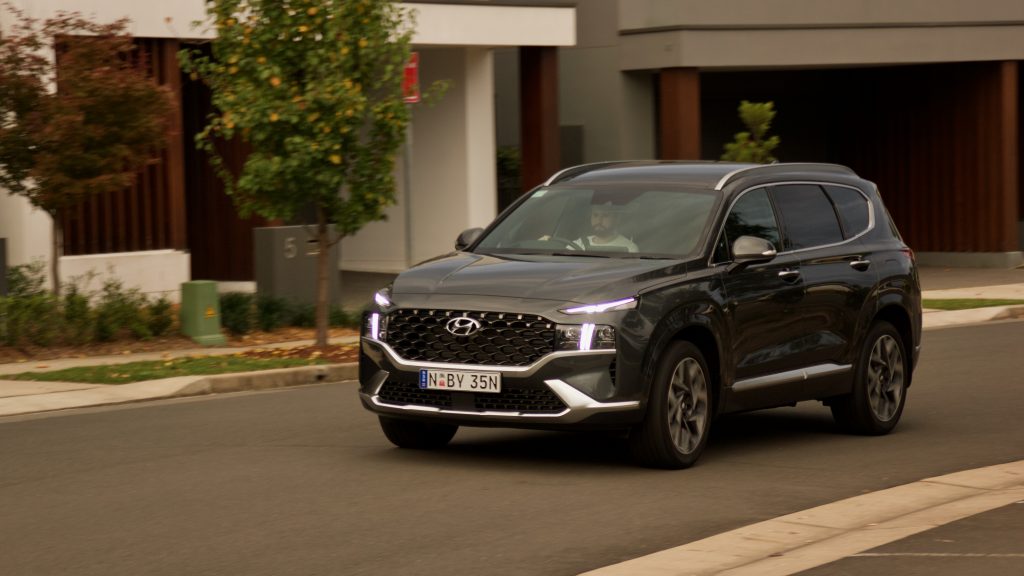
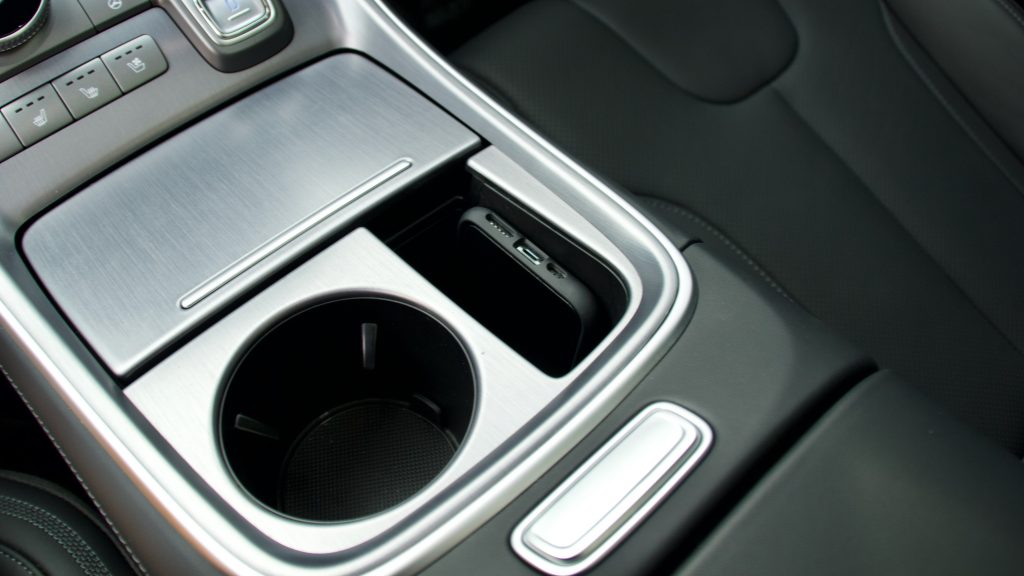
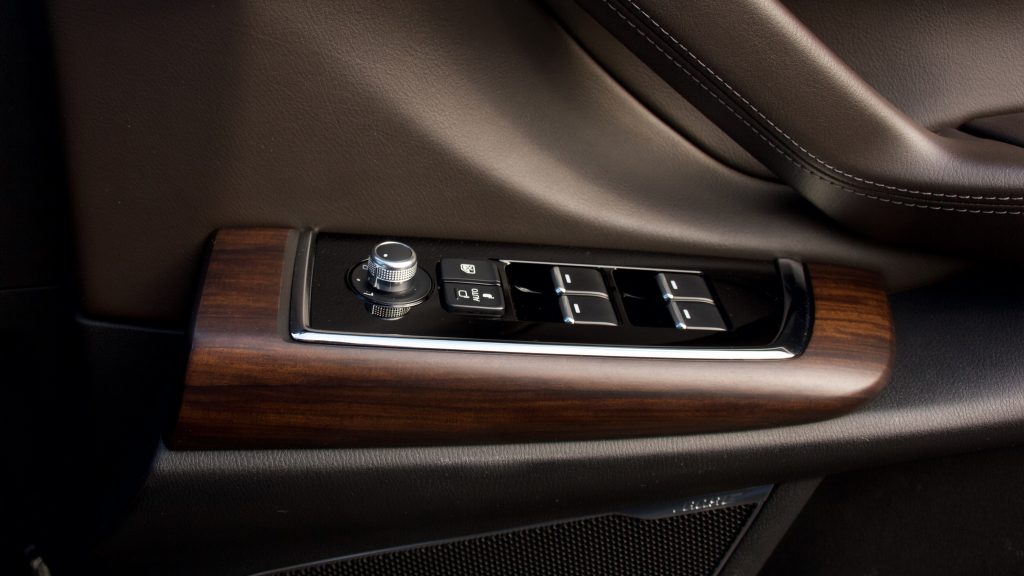
Recently compared the Sante Fe Elite Active with the CX-8 AWD Touring SP (which I think is a closer competitor size-wise than the CX-9) and whilst the fit and finish was as good as the Mazda, we found that the new ‘drive-by button’ set up and excessive button layout quite polarising. Whilst the towing ability is much better than the CX-8, the quality and substantially better equipment level and pricing of the CX-8 won us over. Waiting for a CX-8 Touring SP to arrive in our garage in a few months.